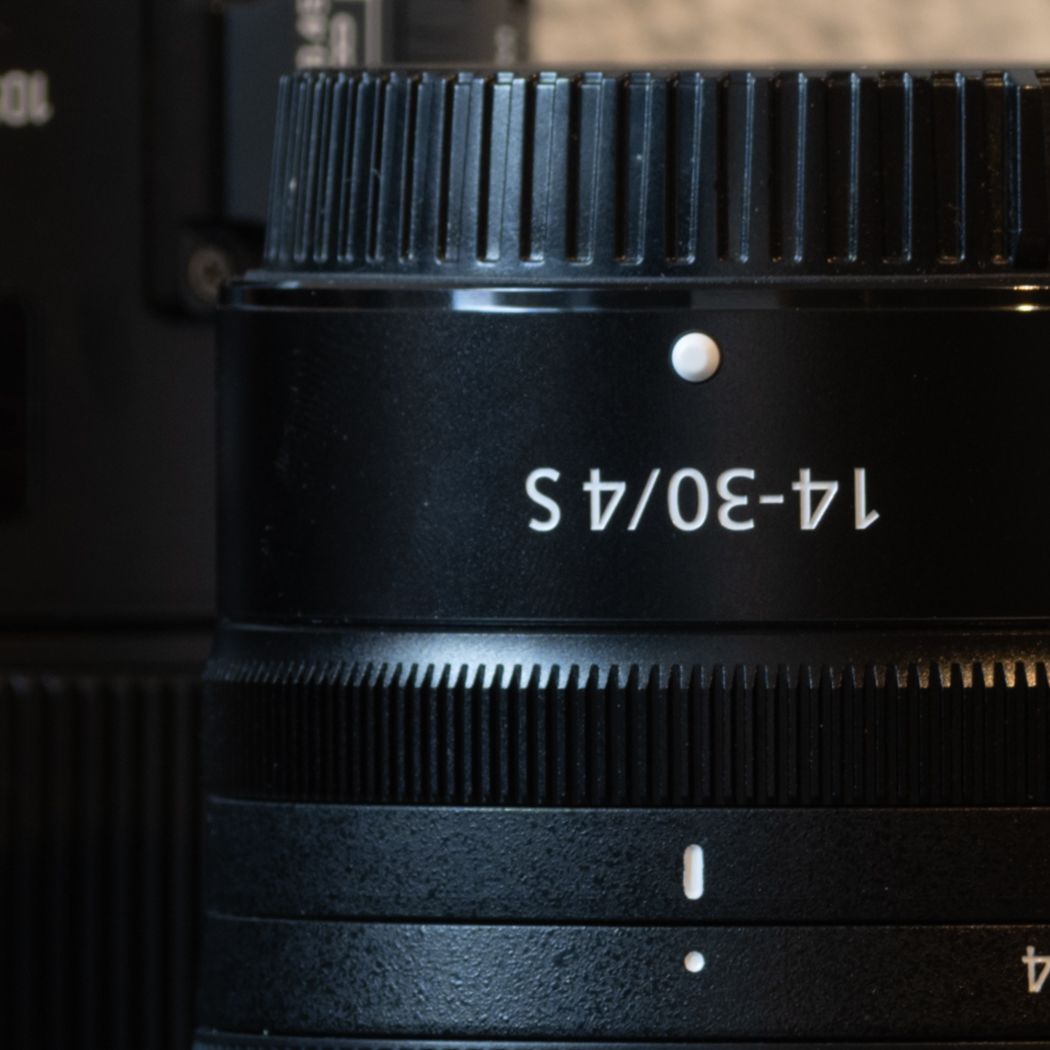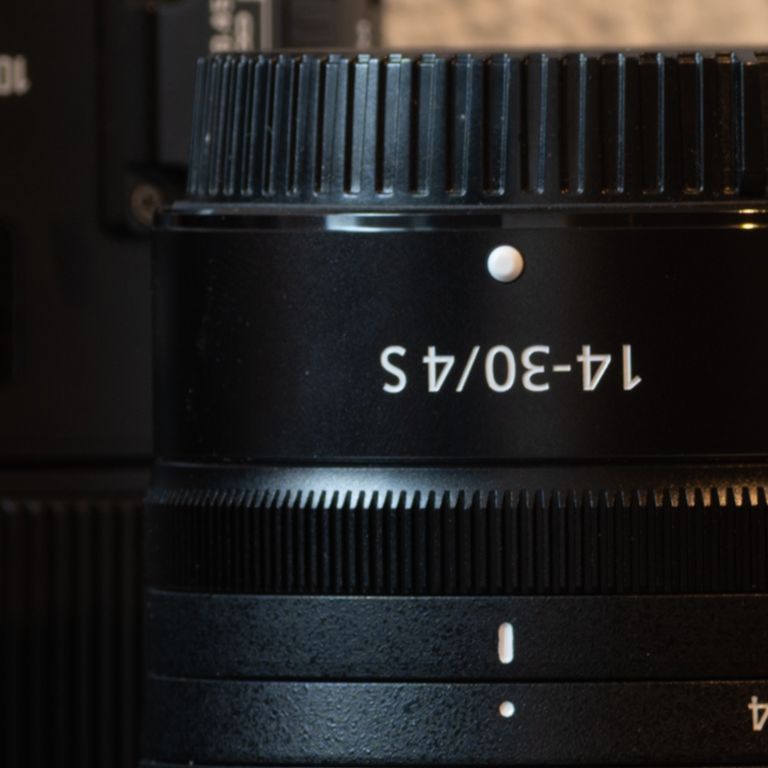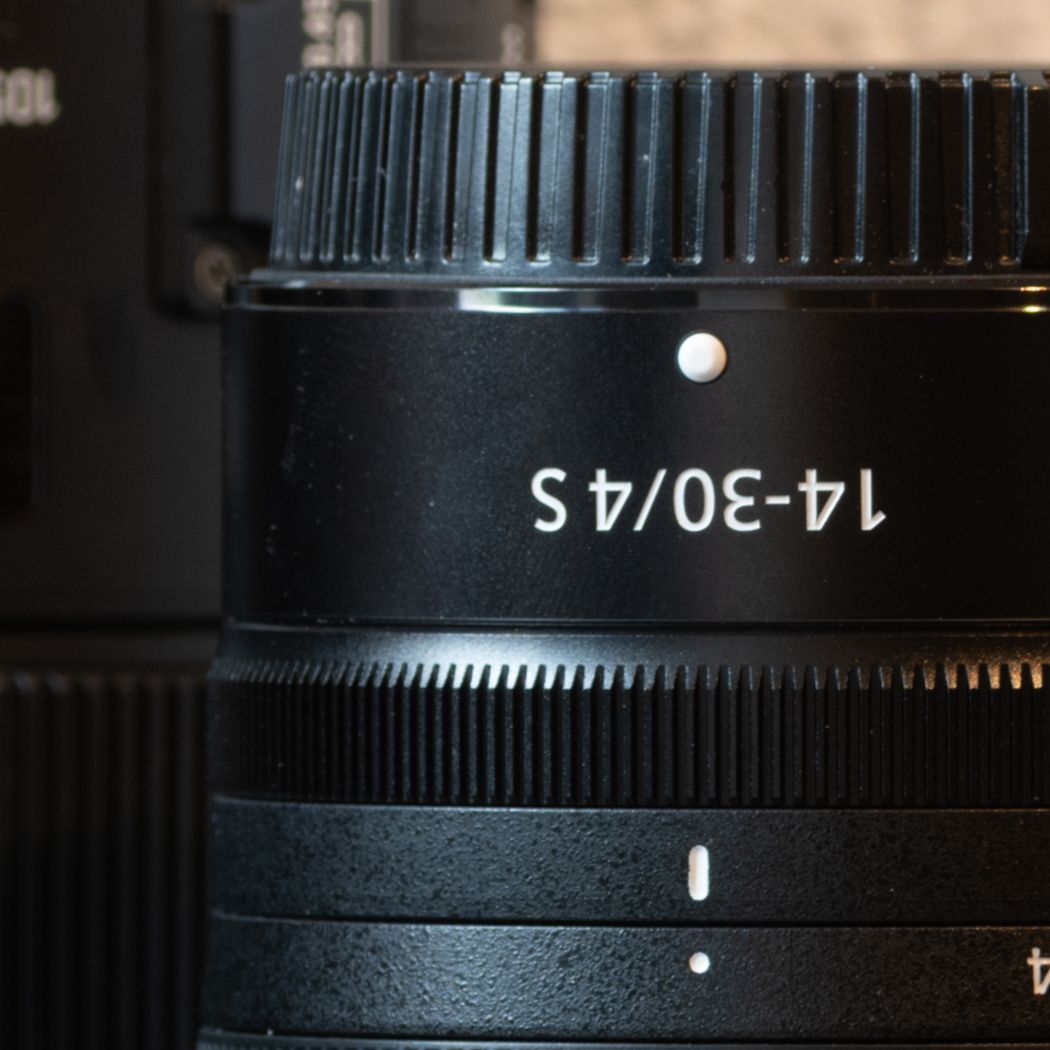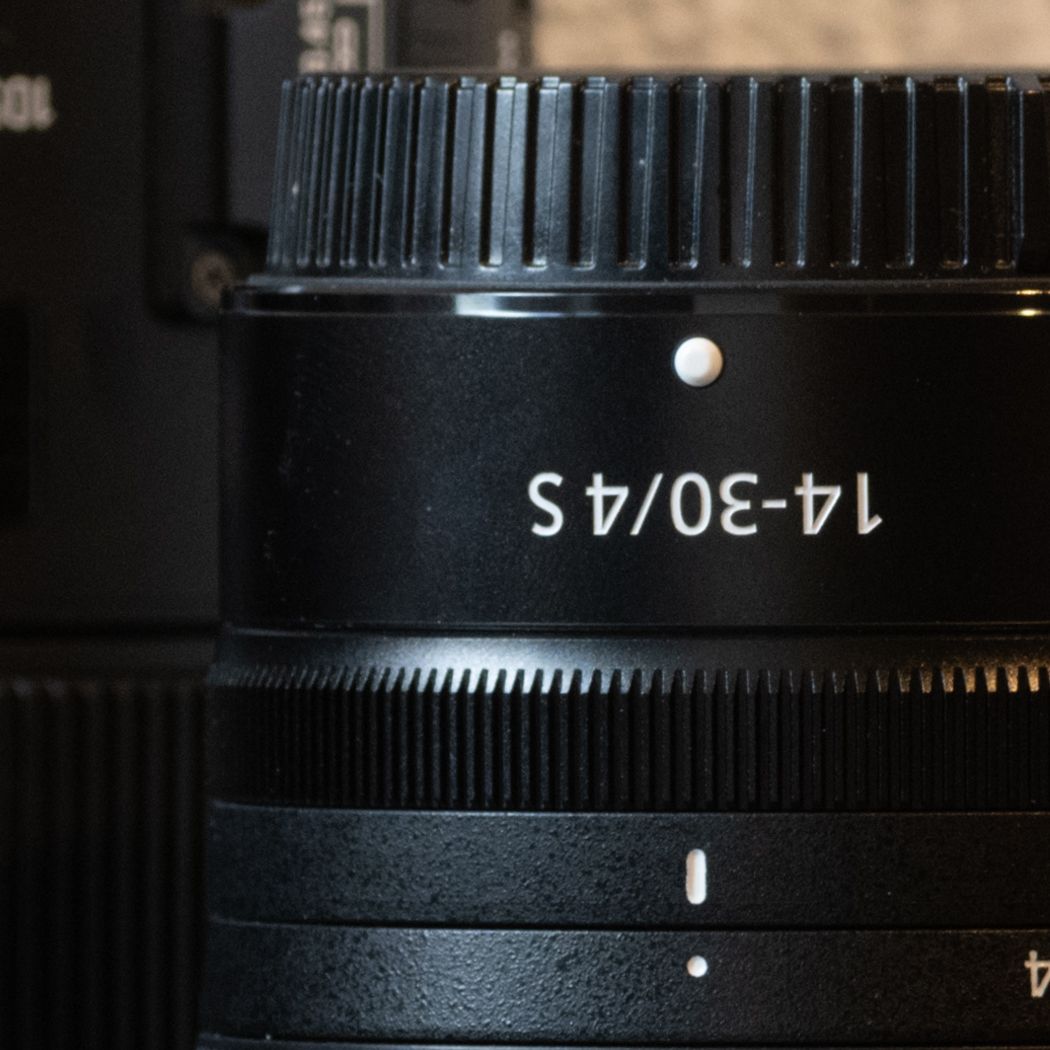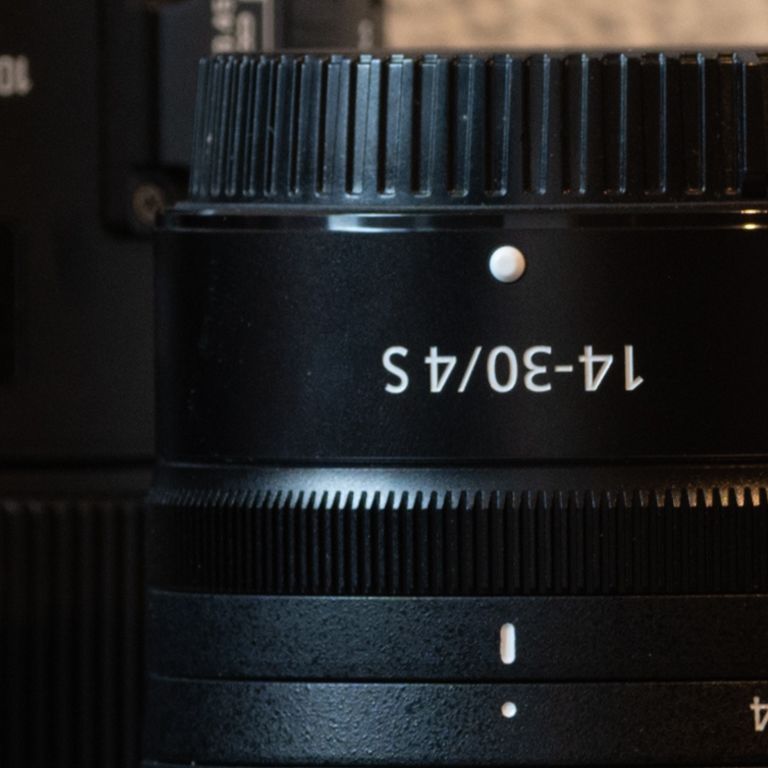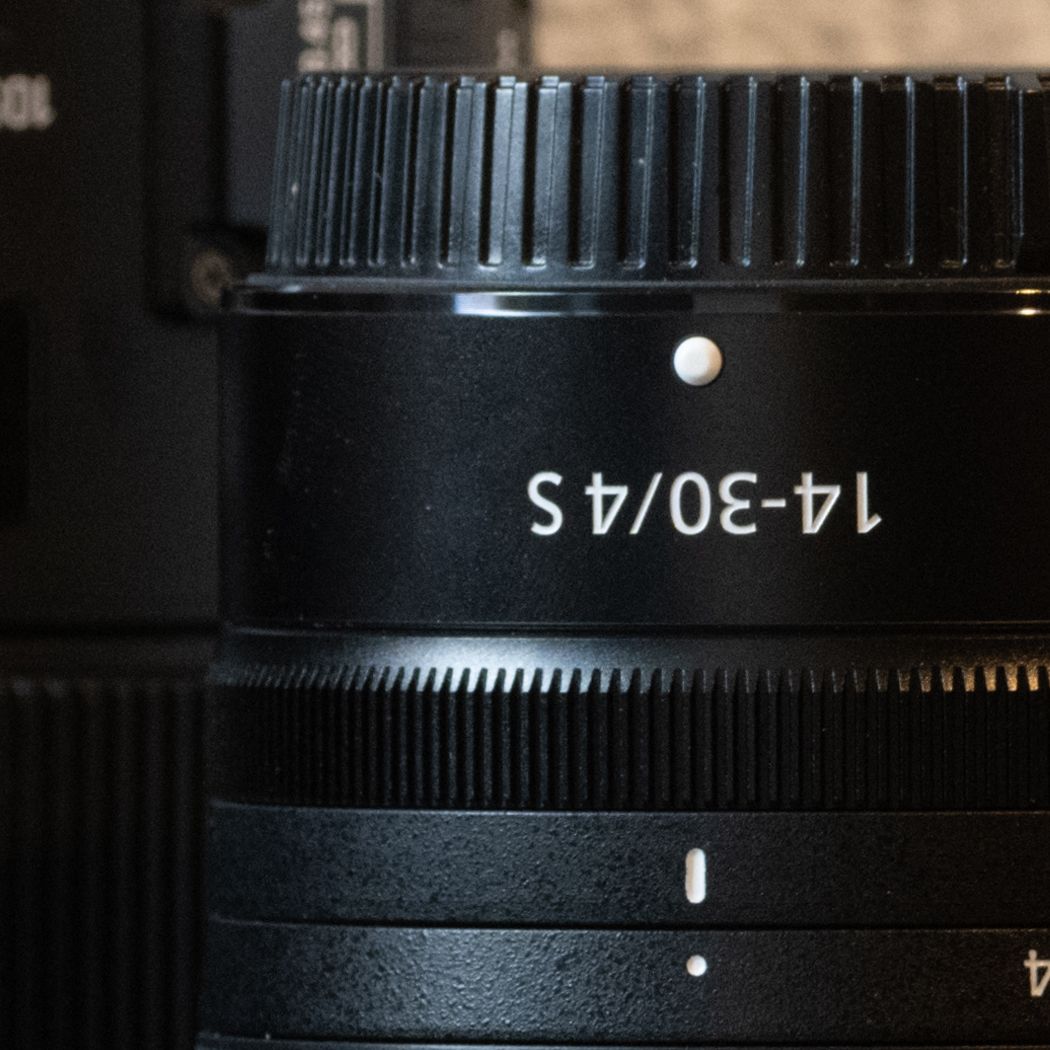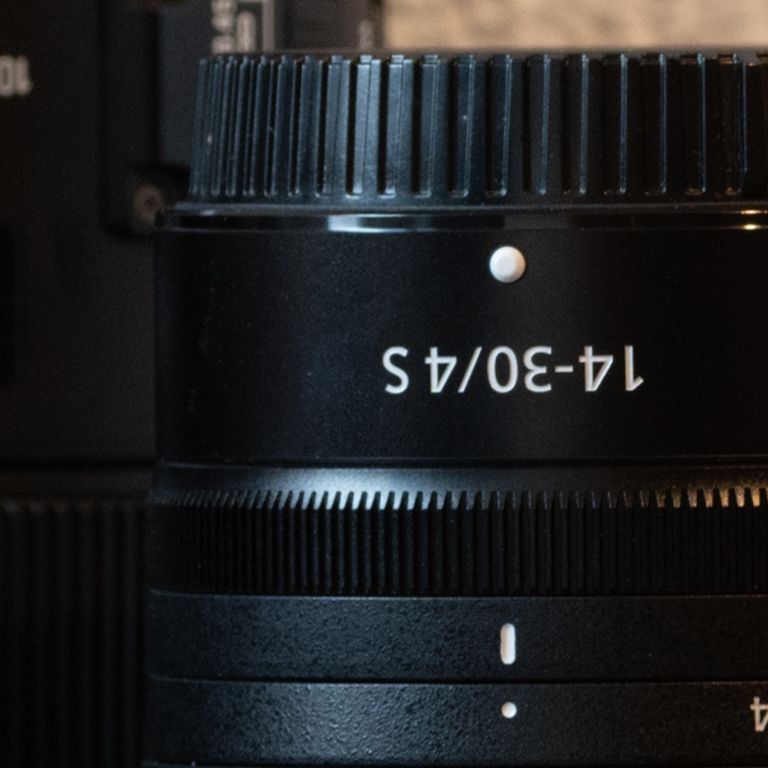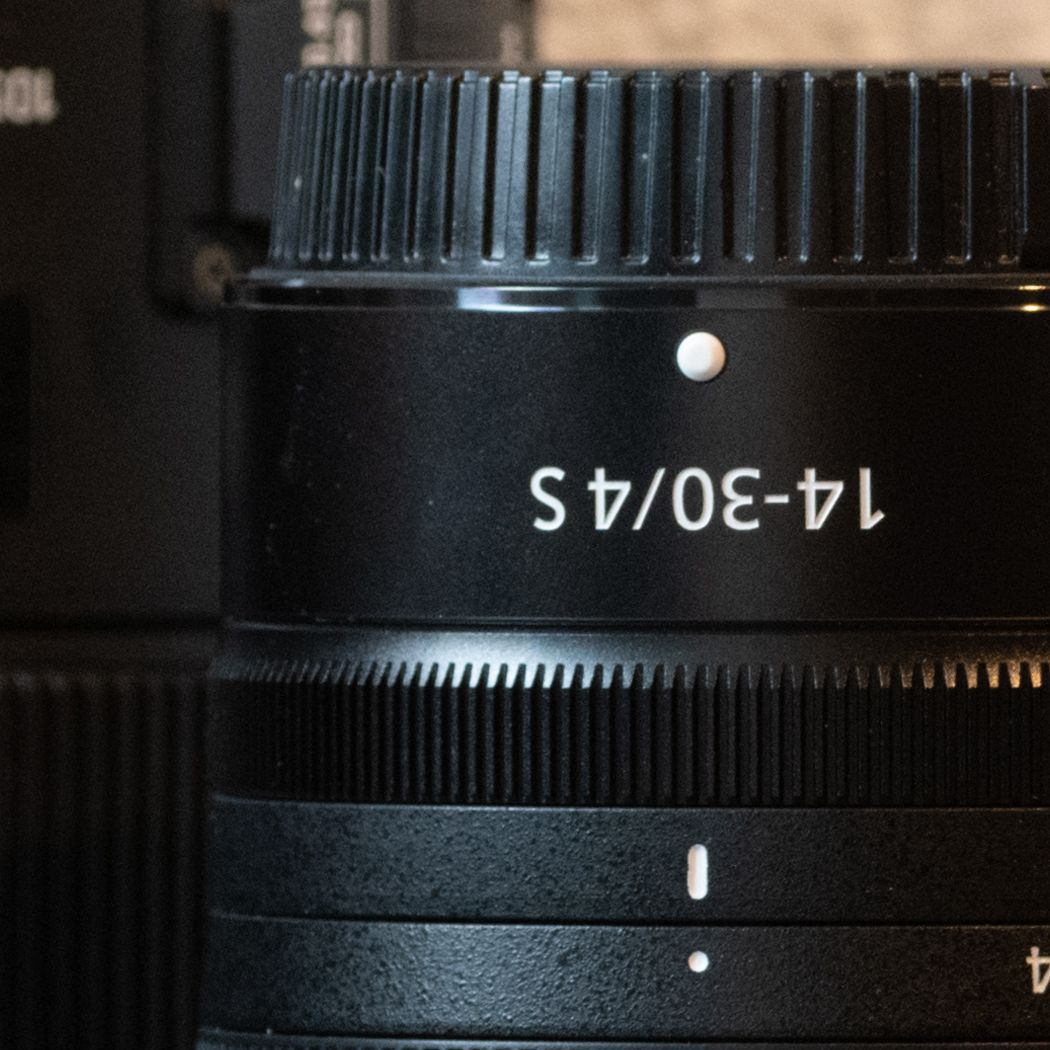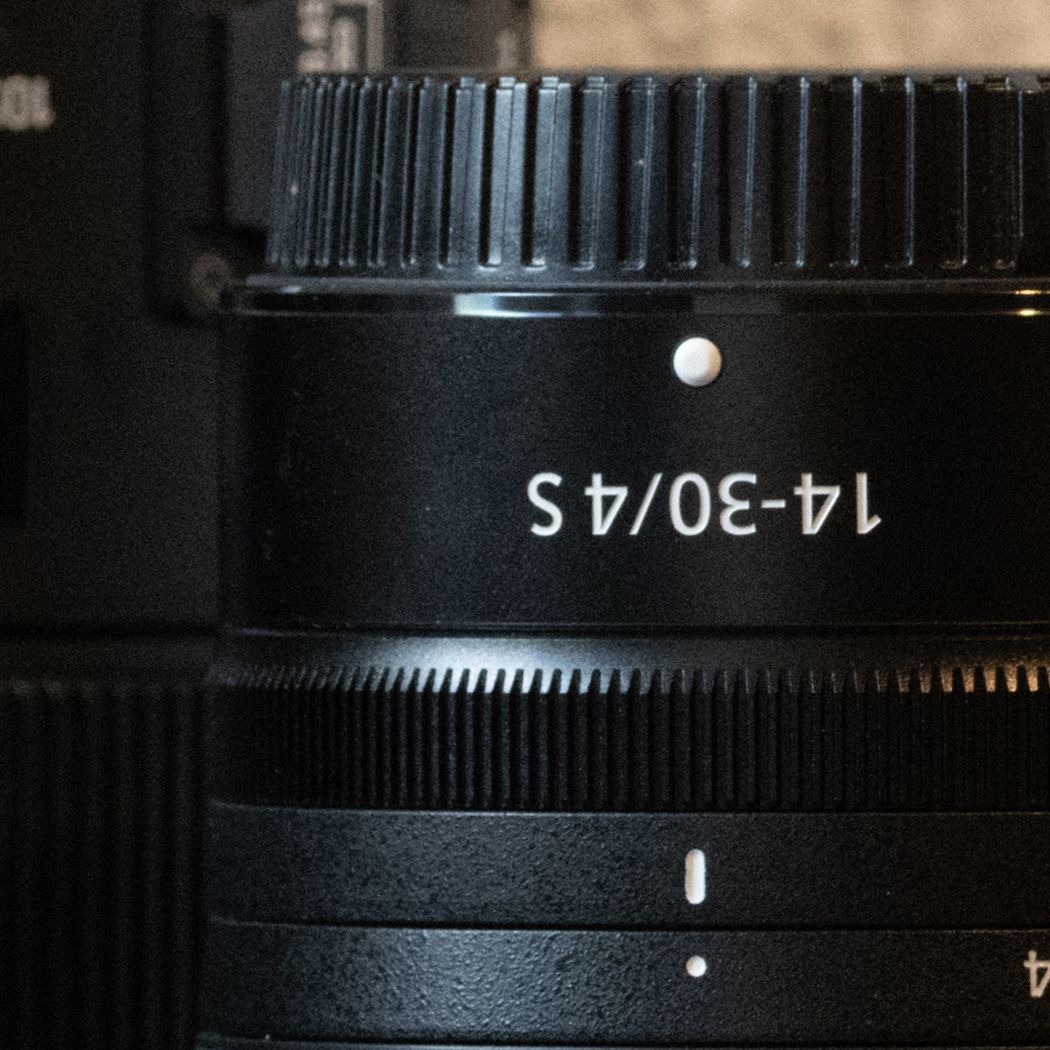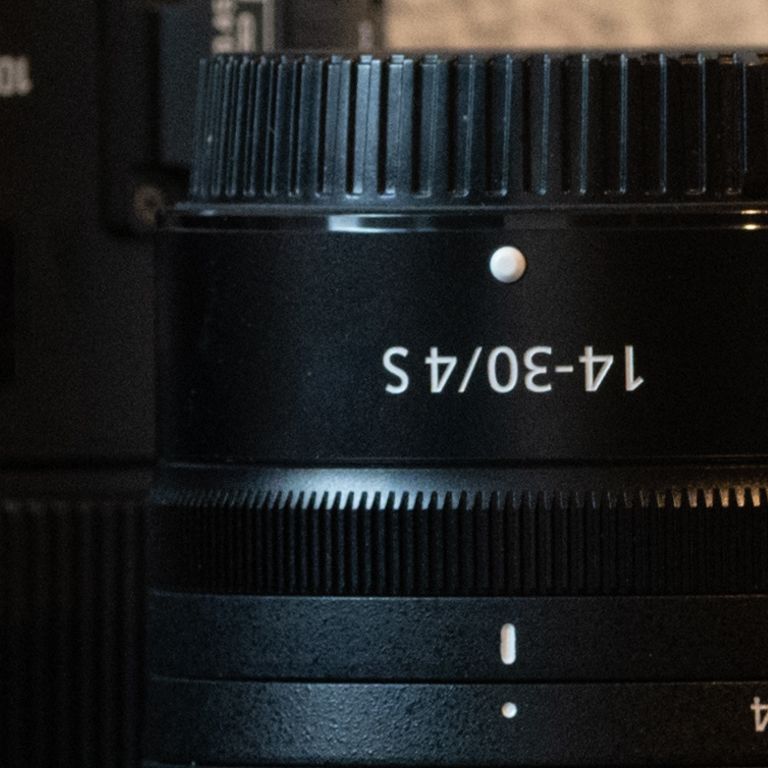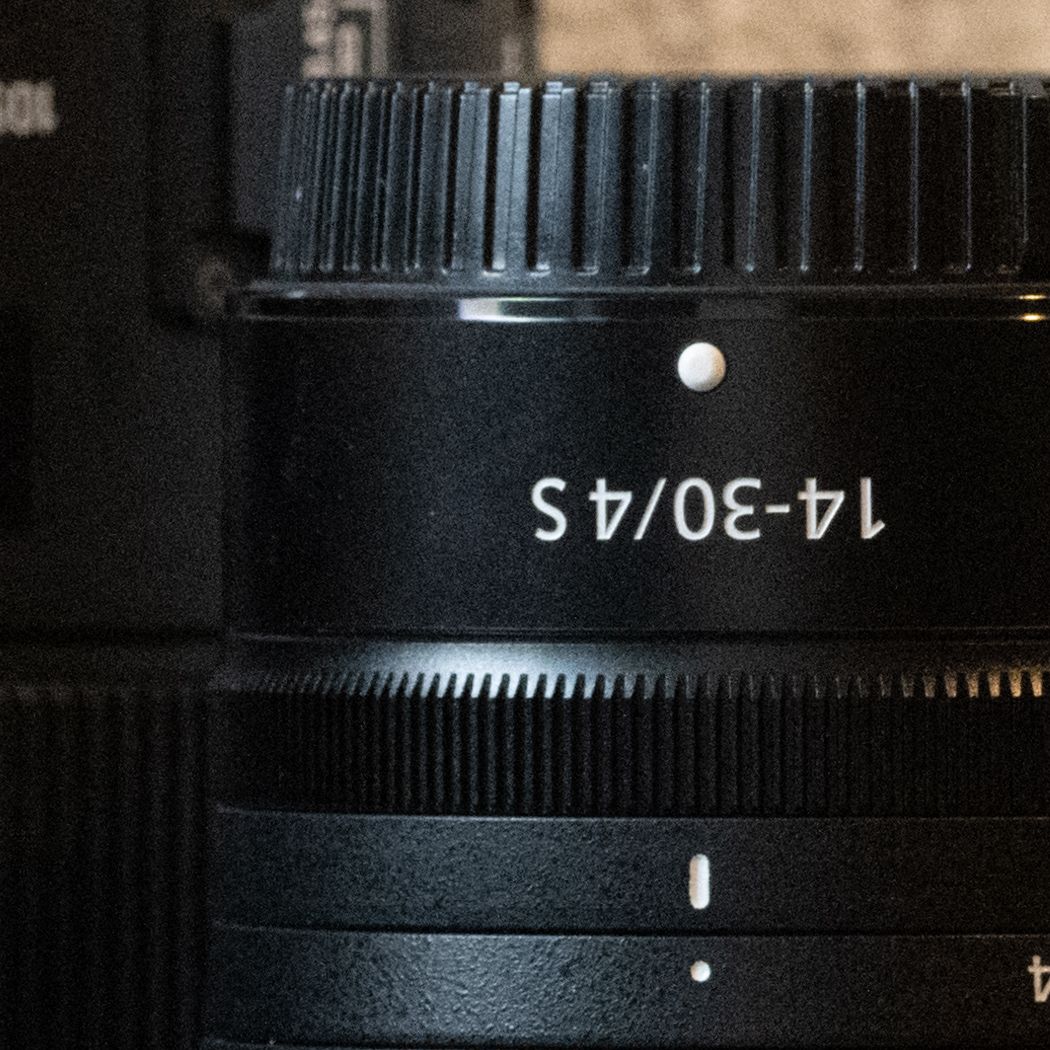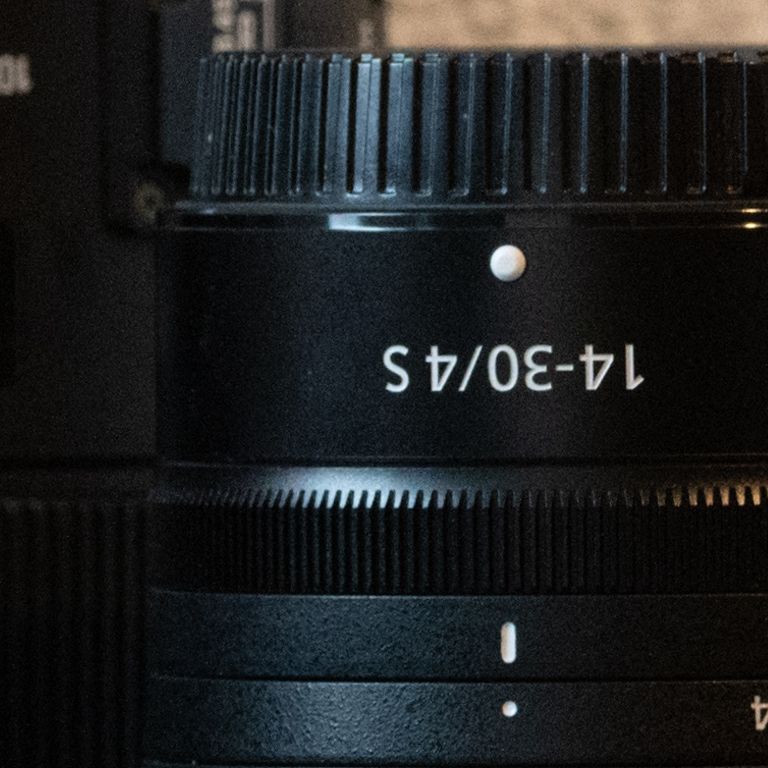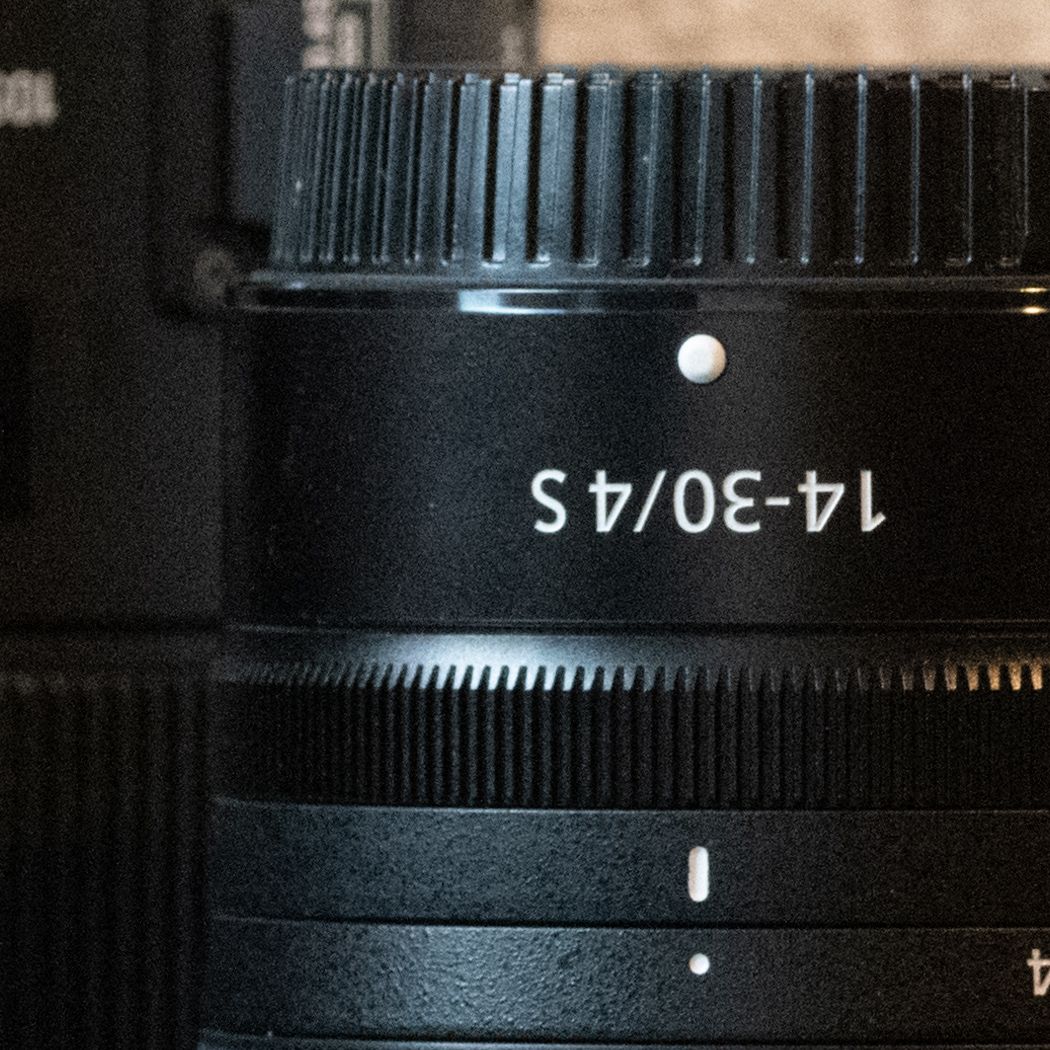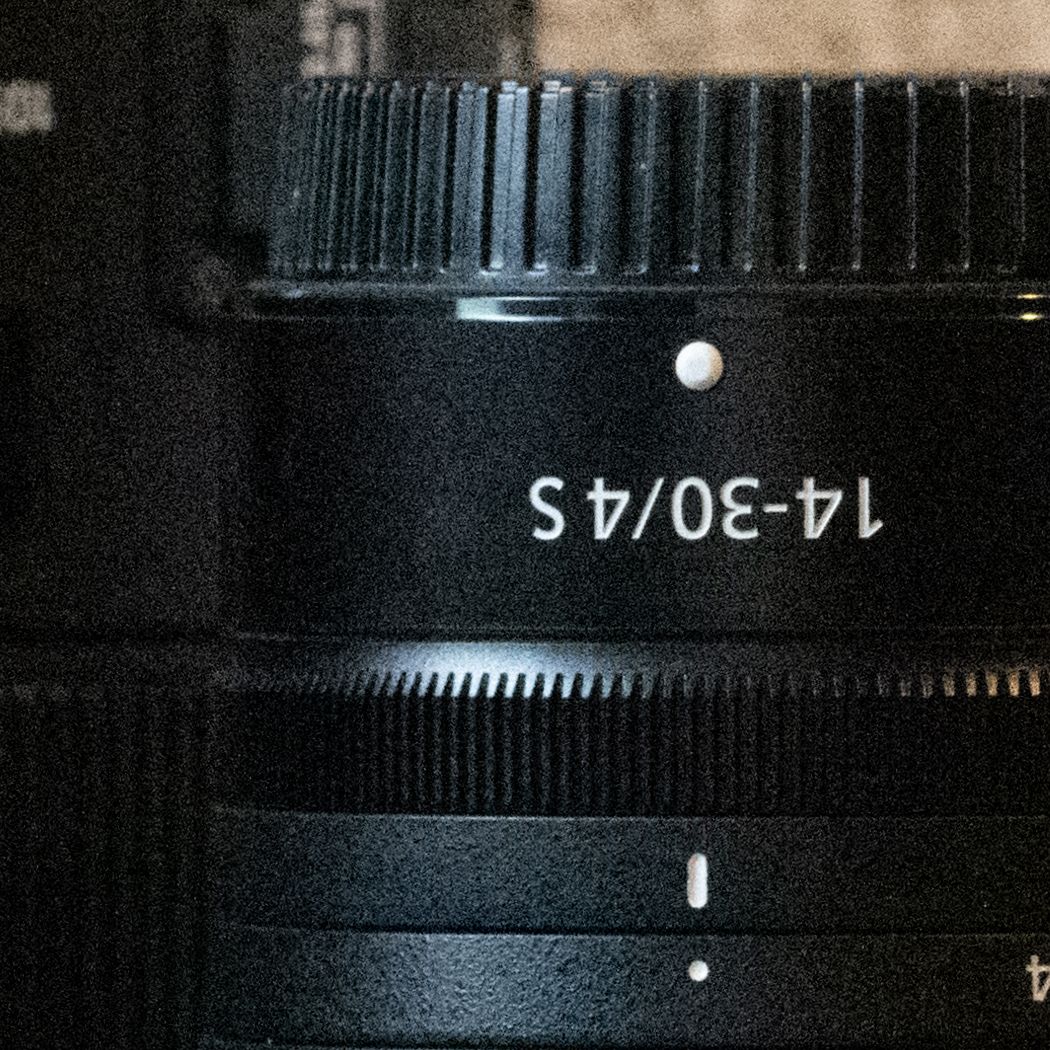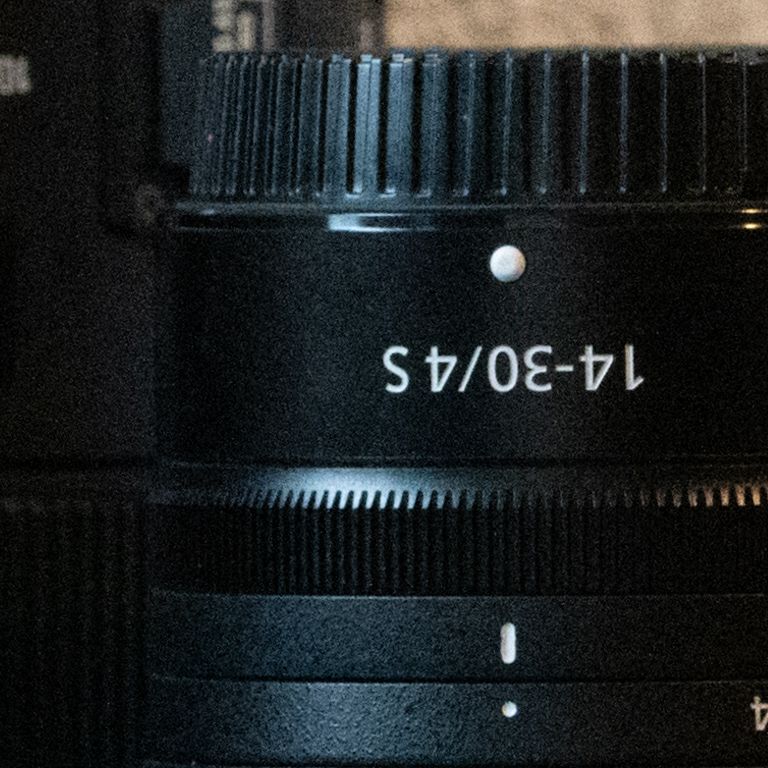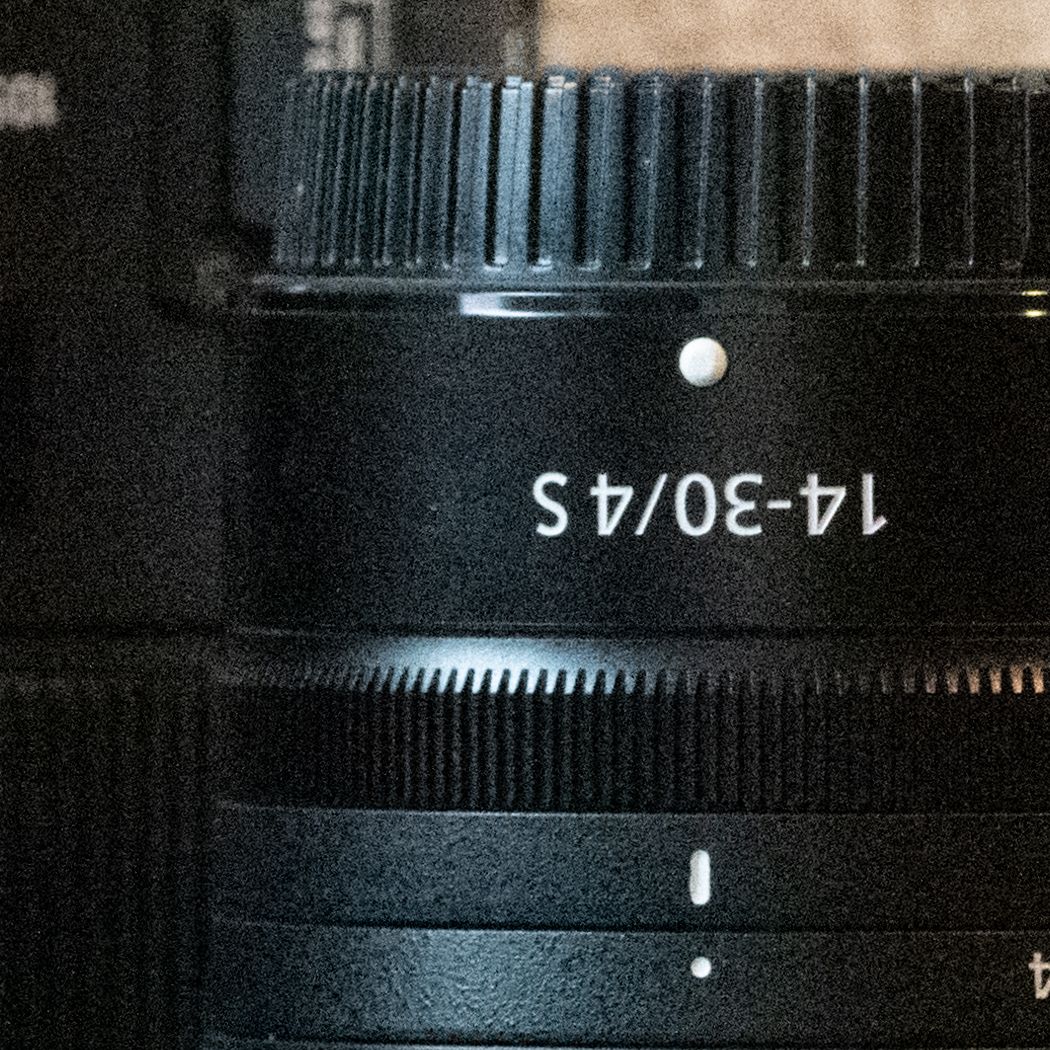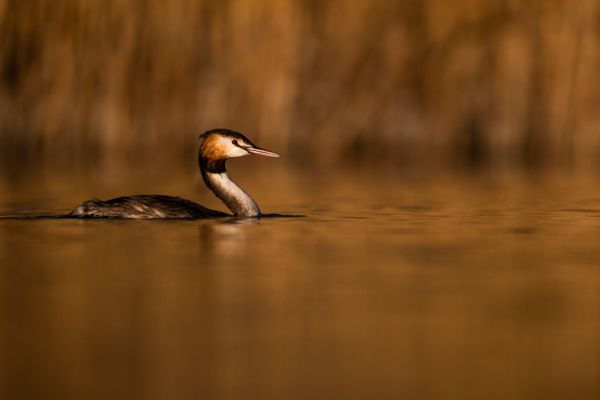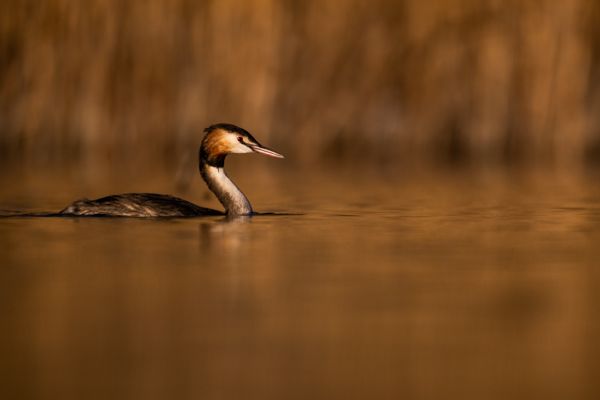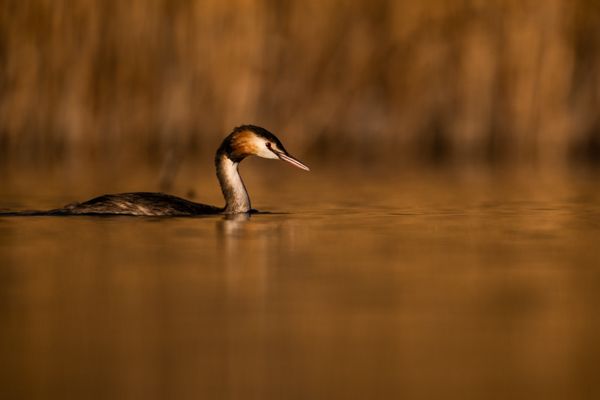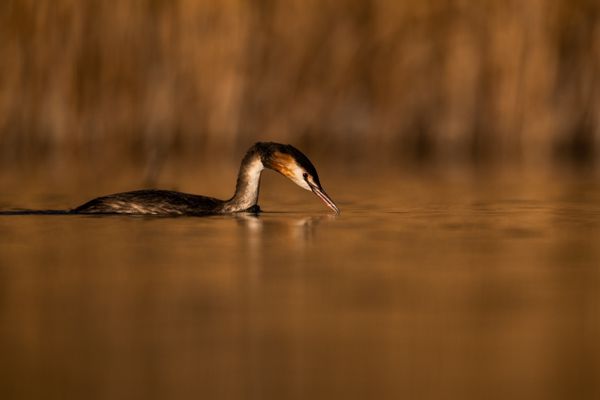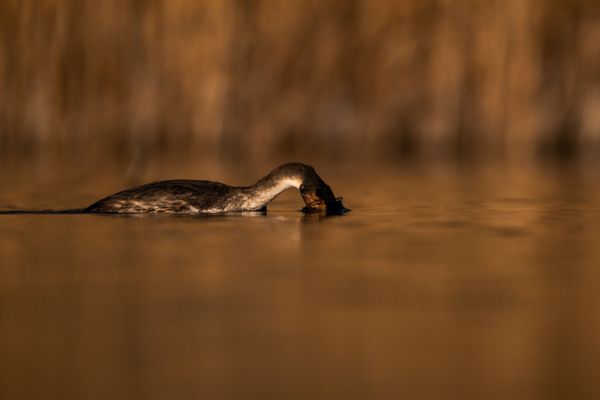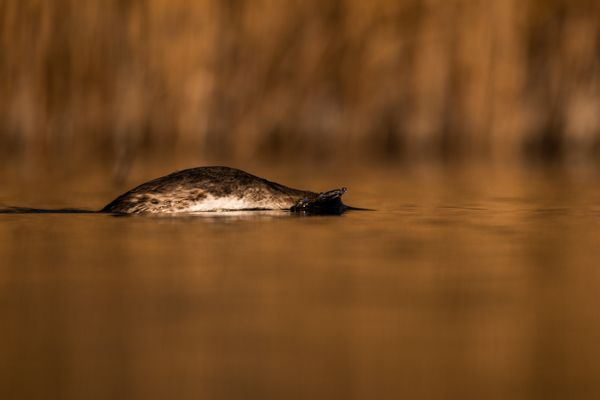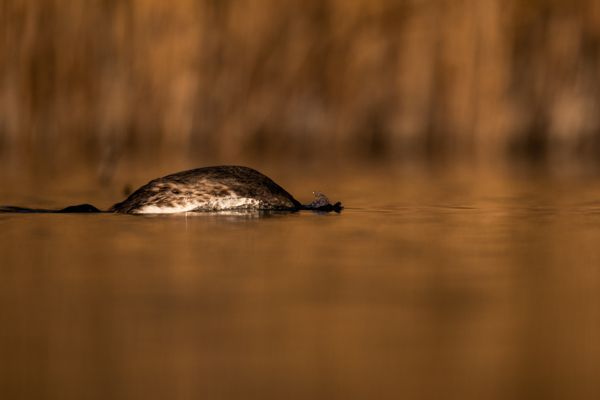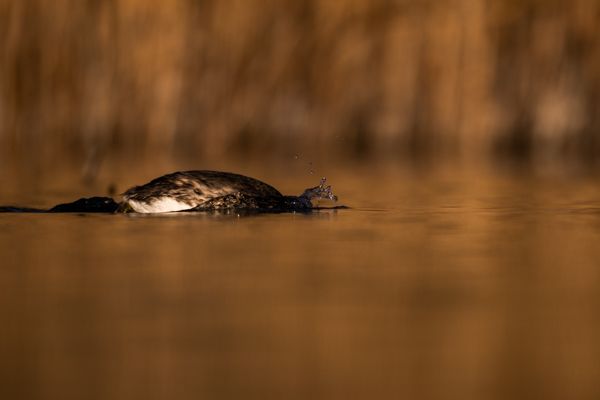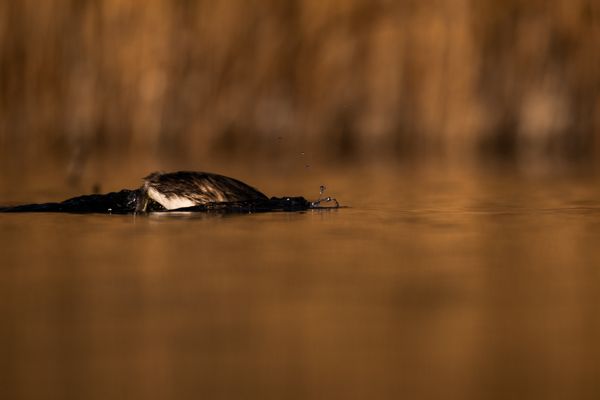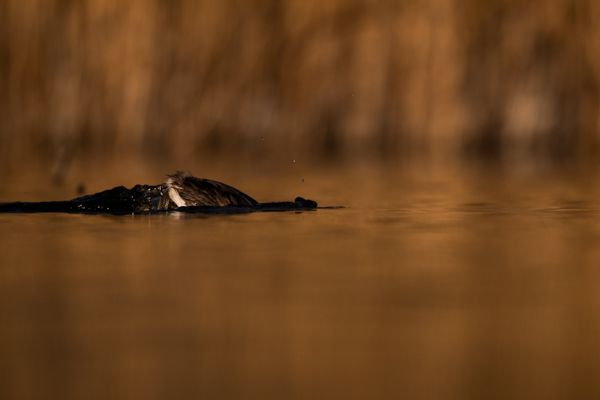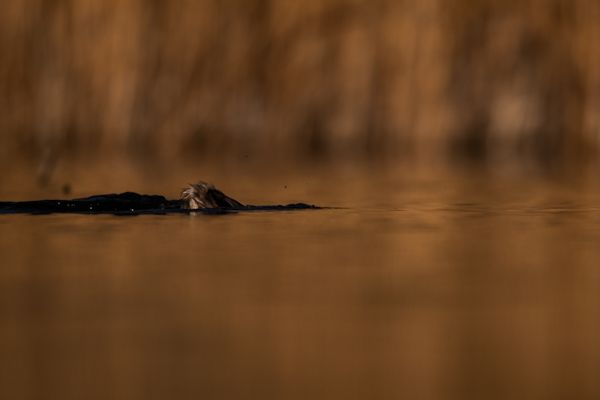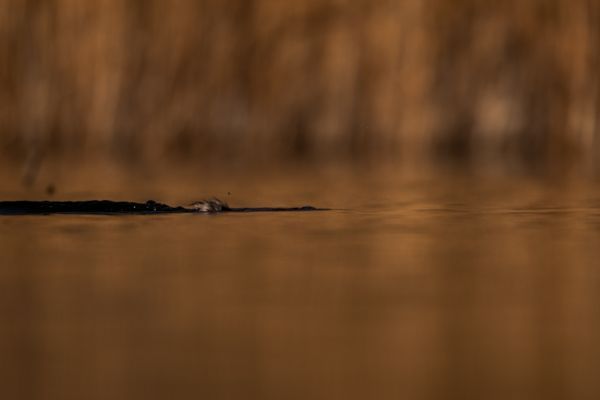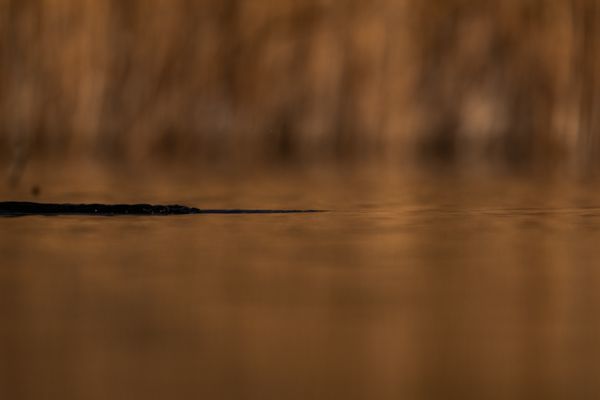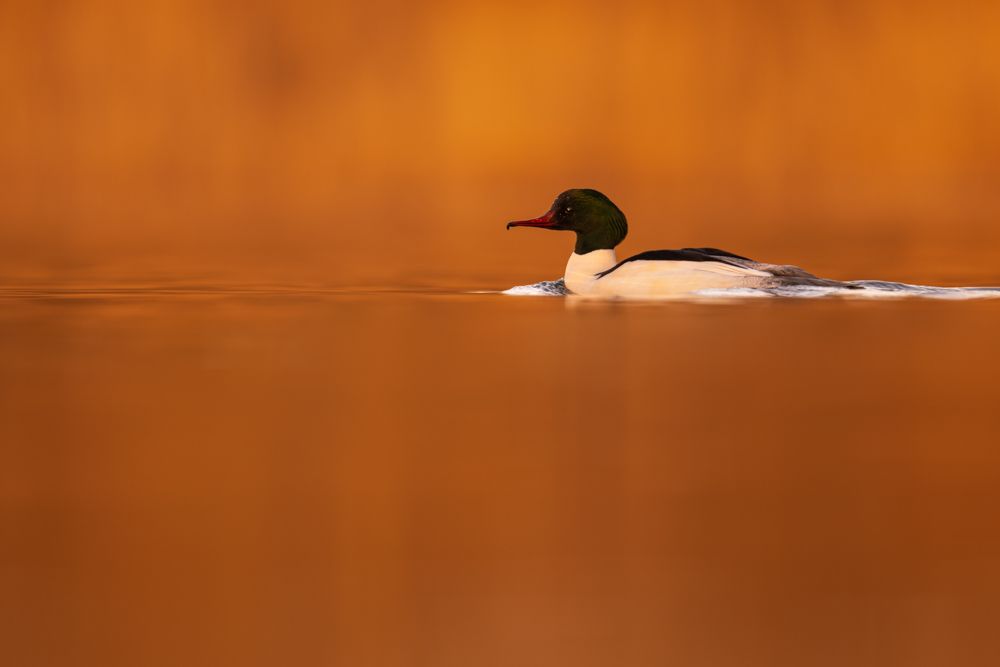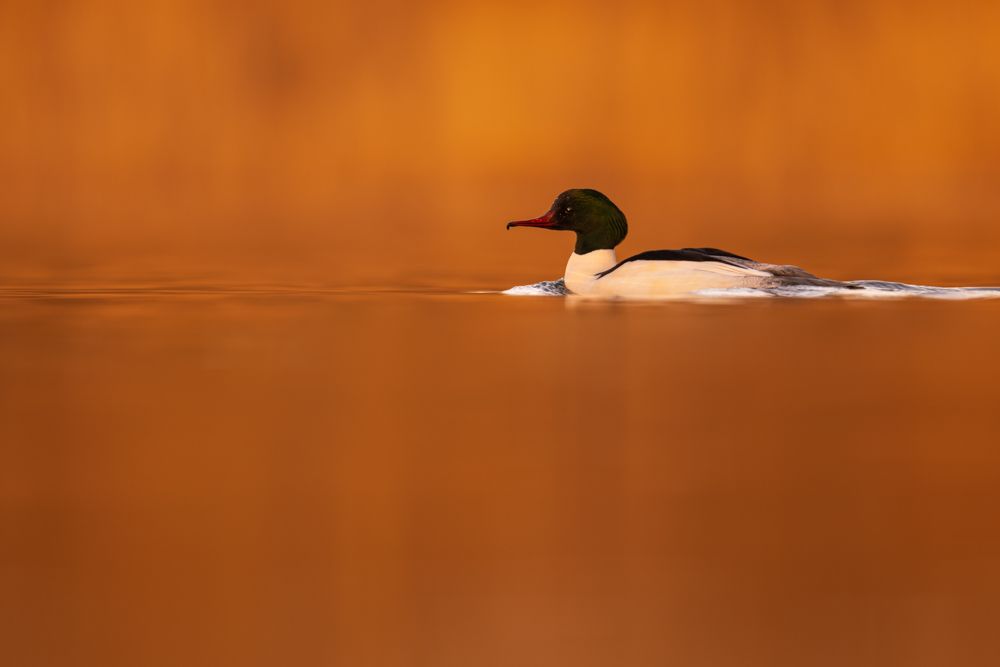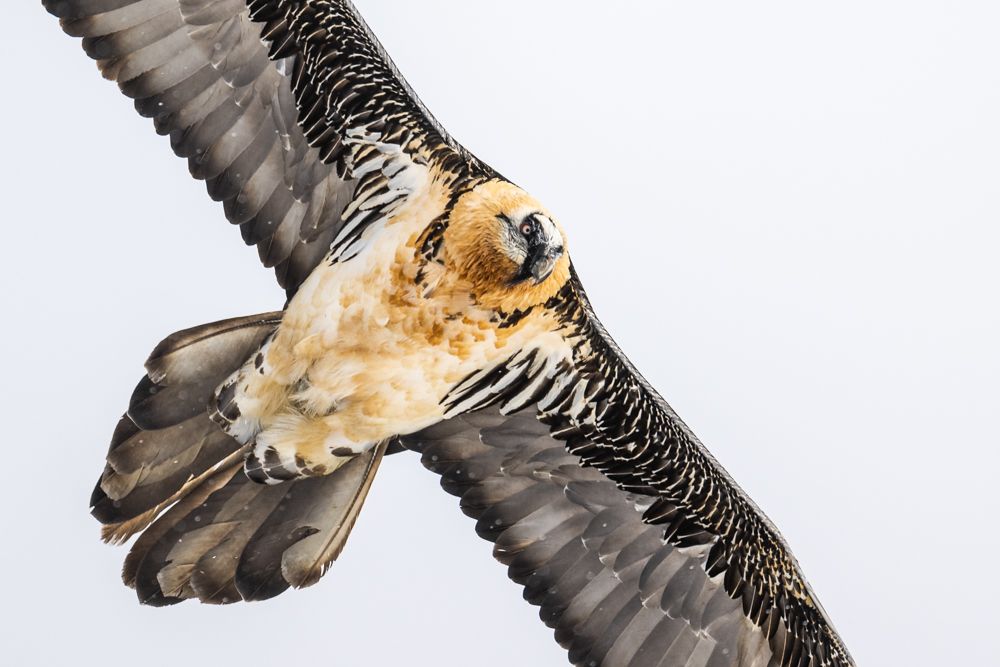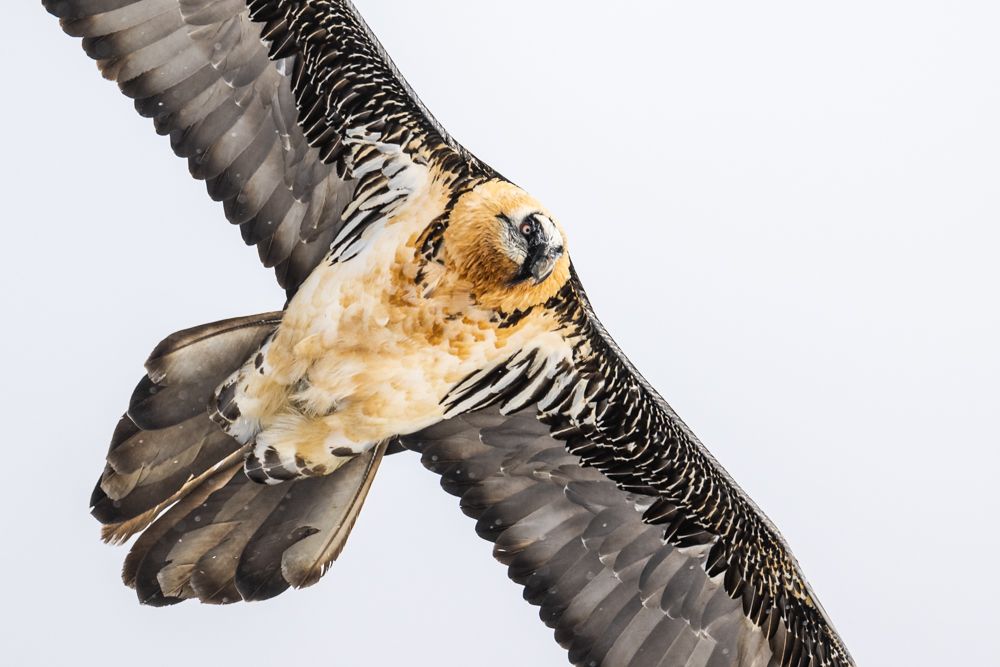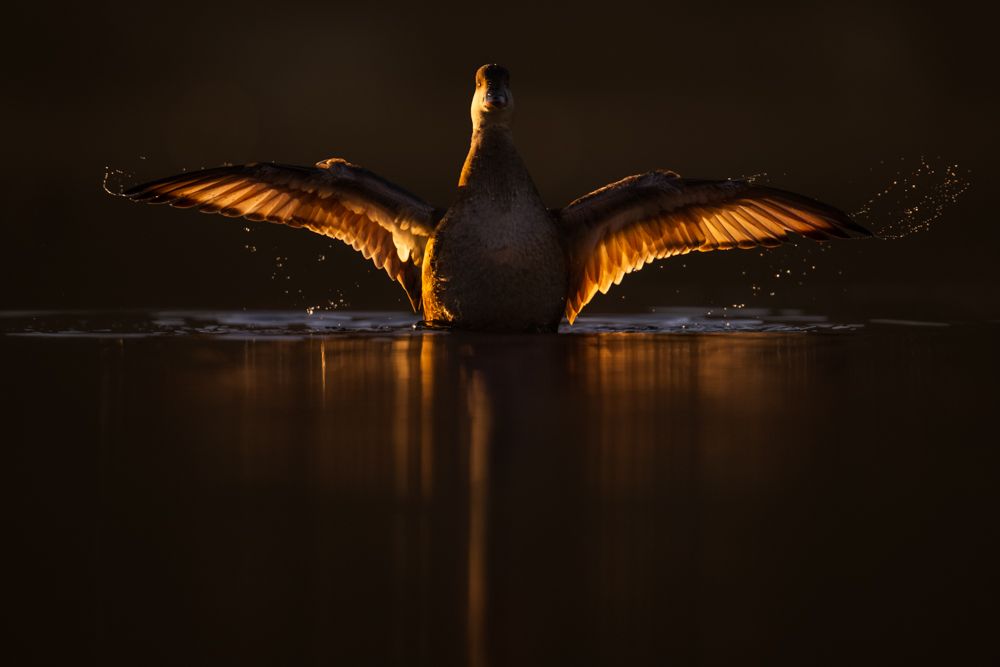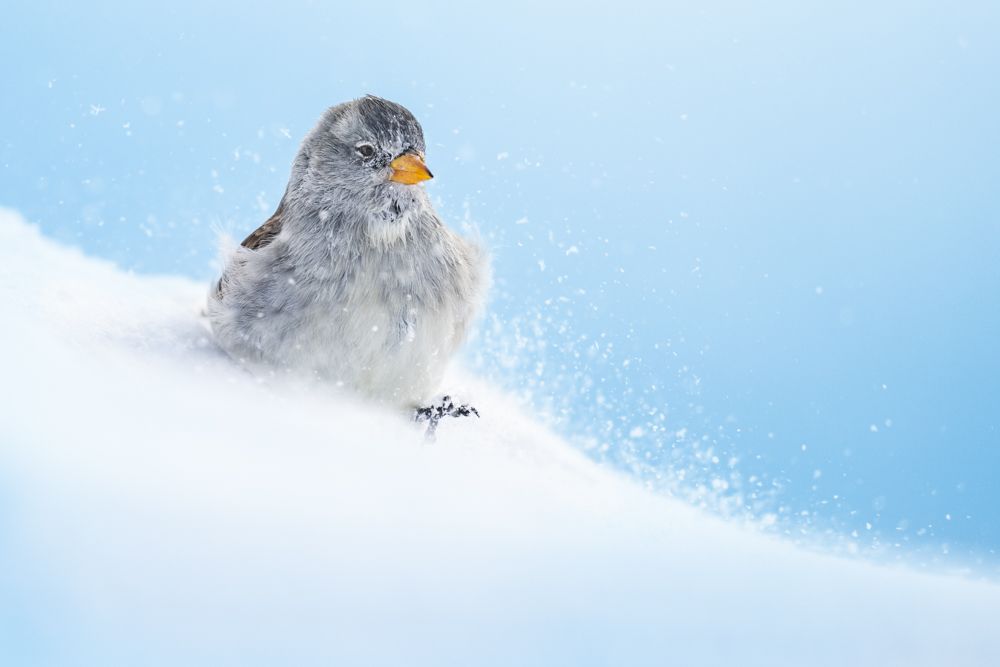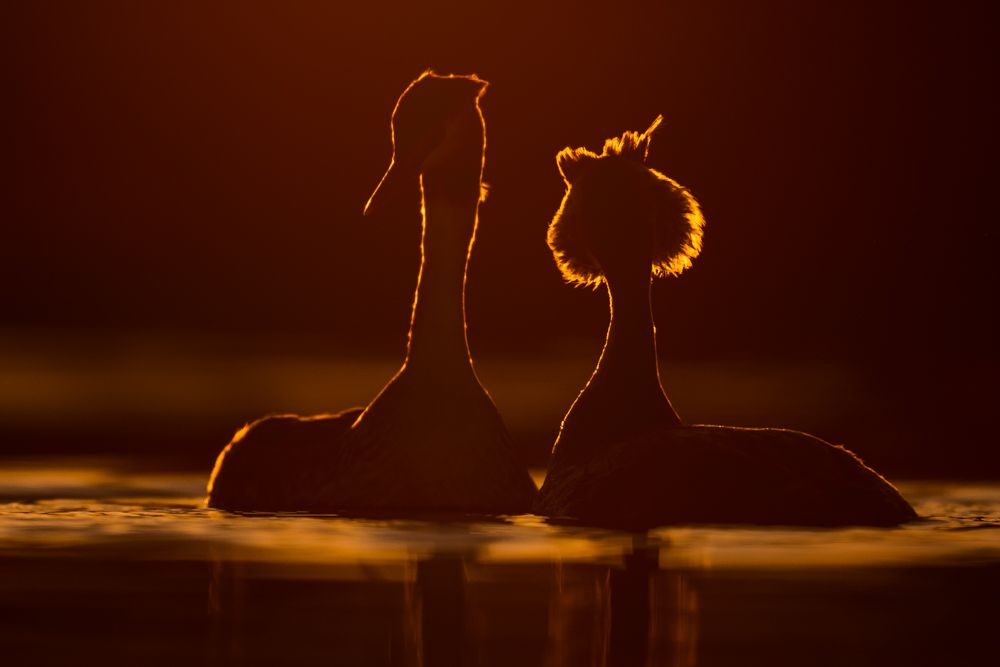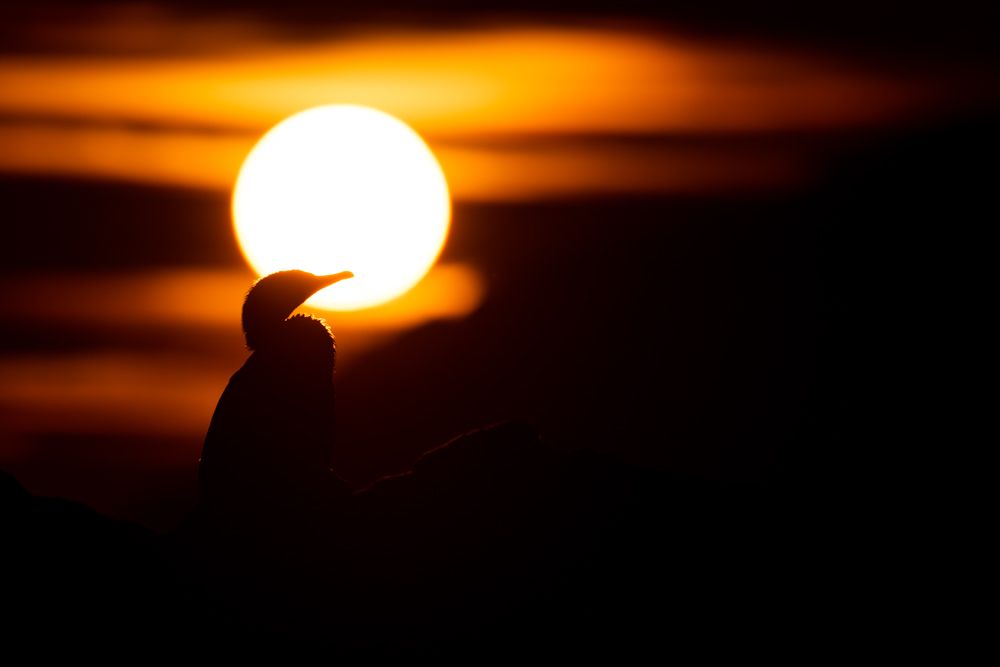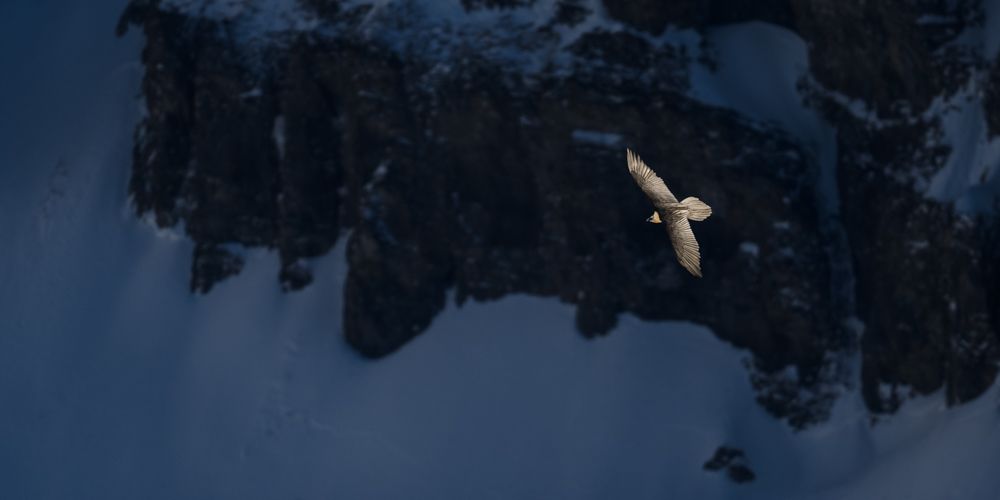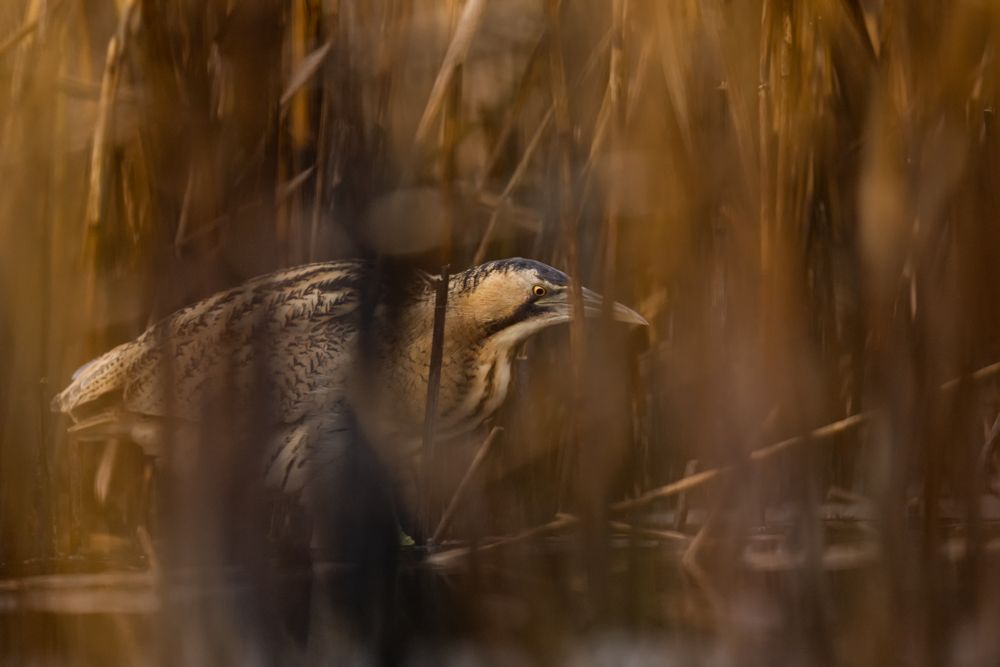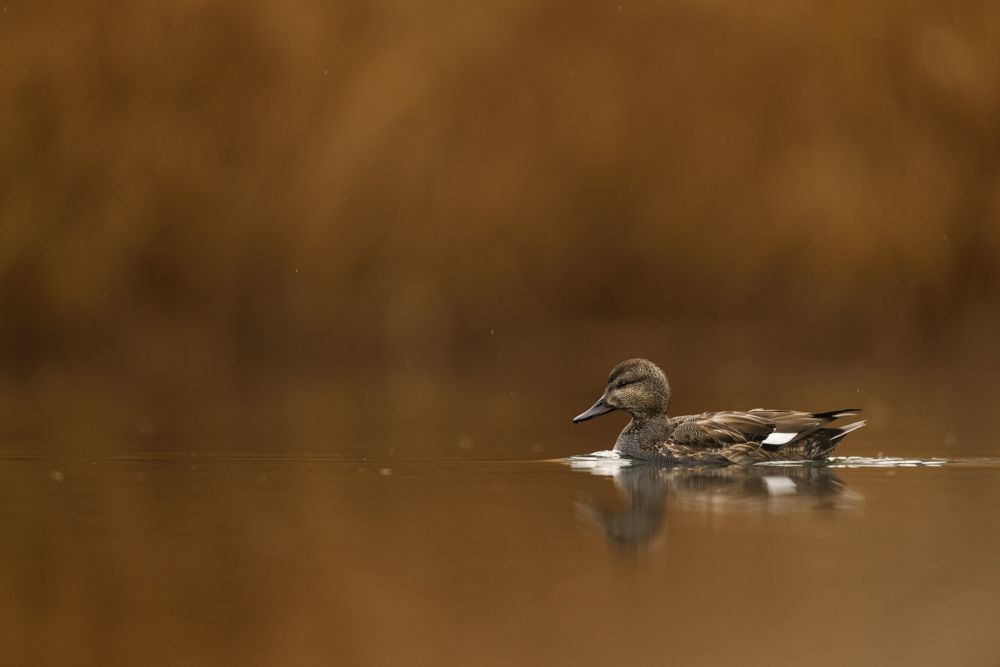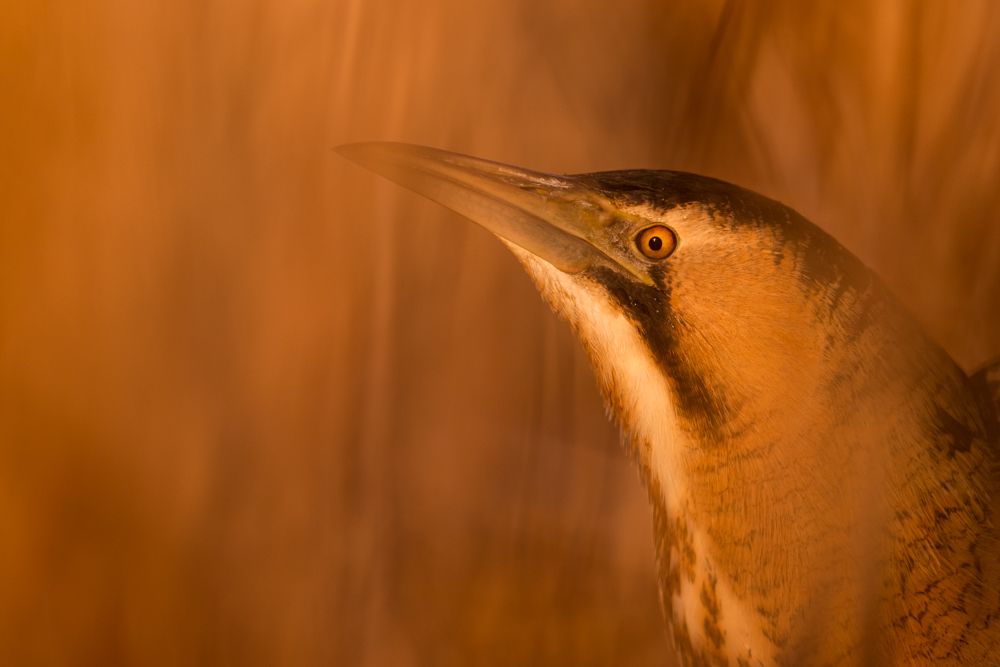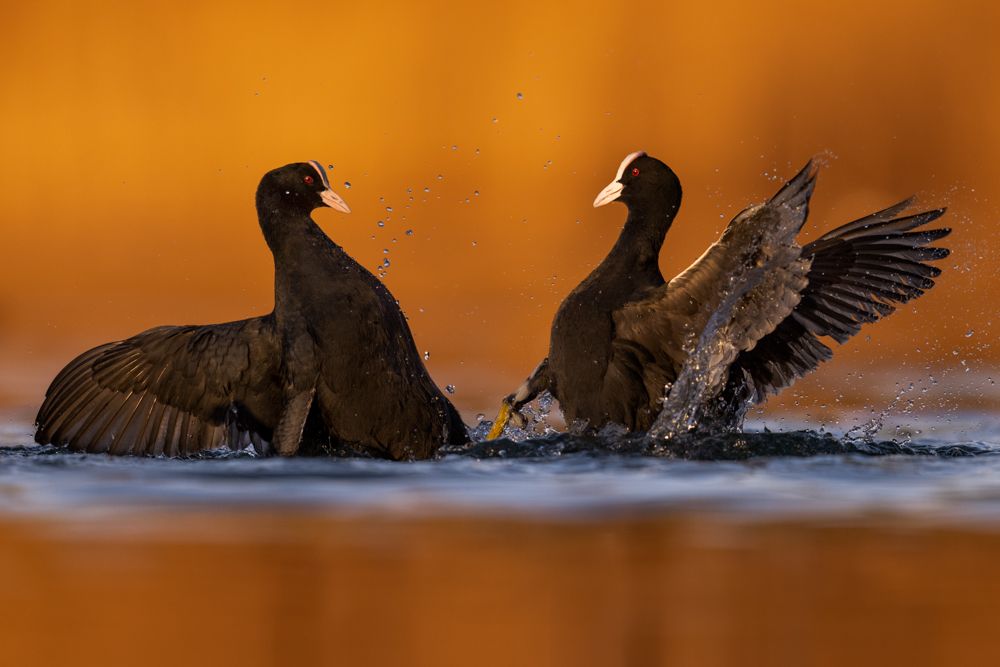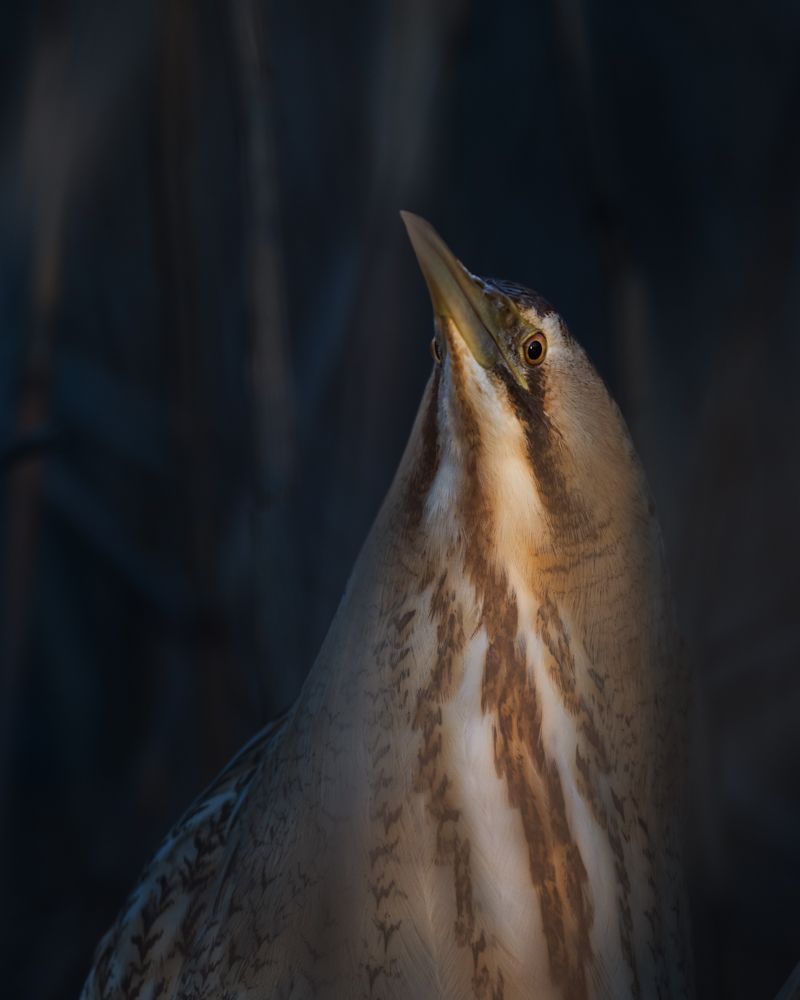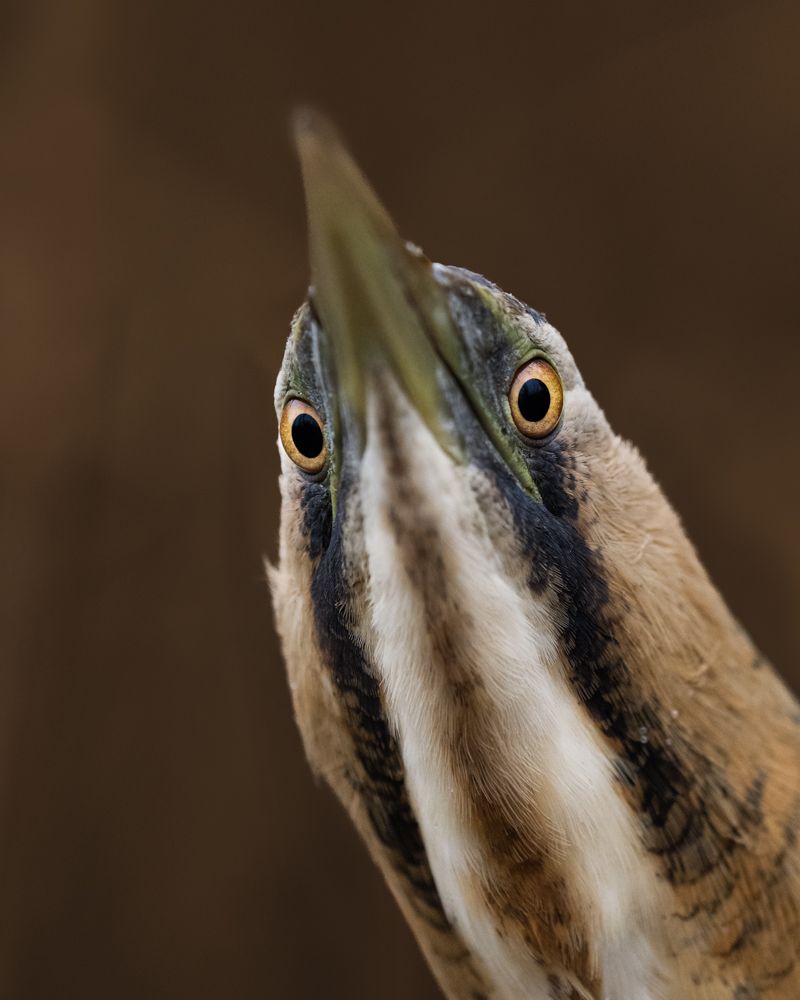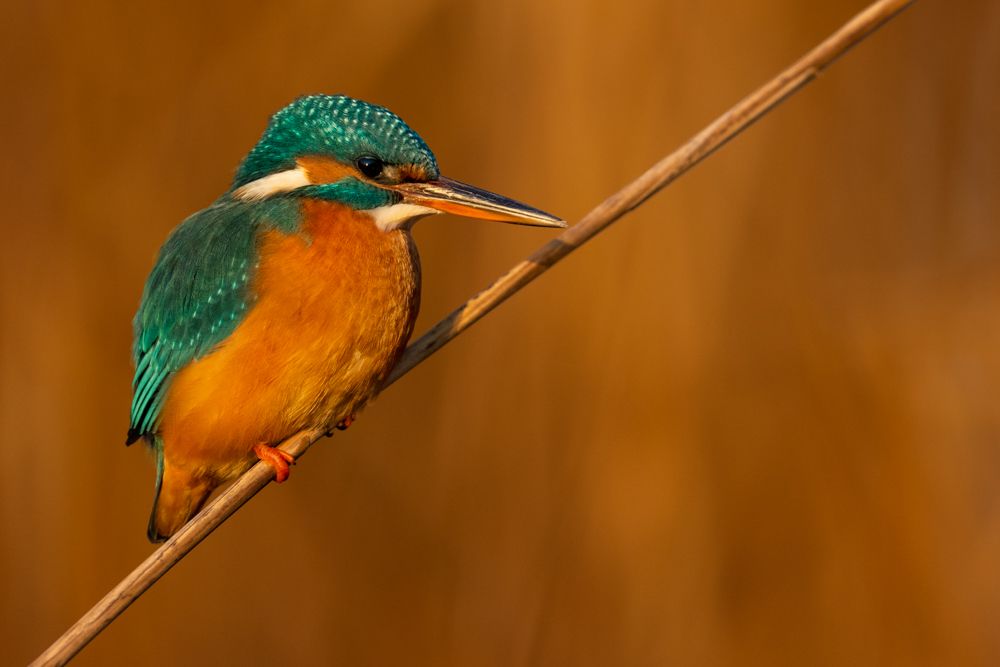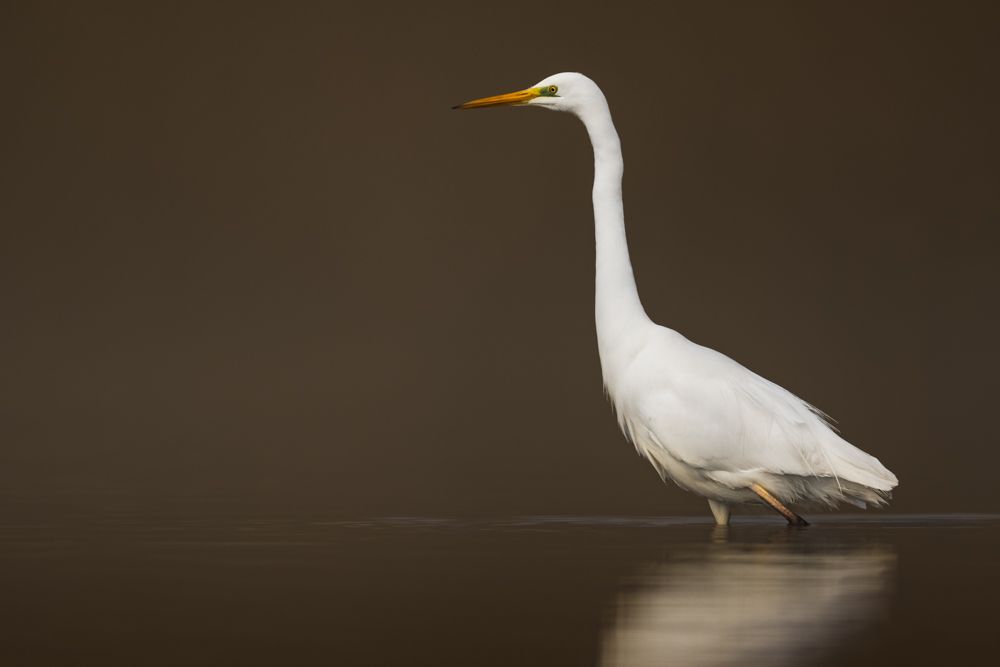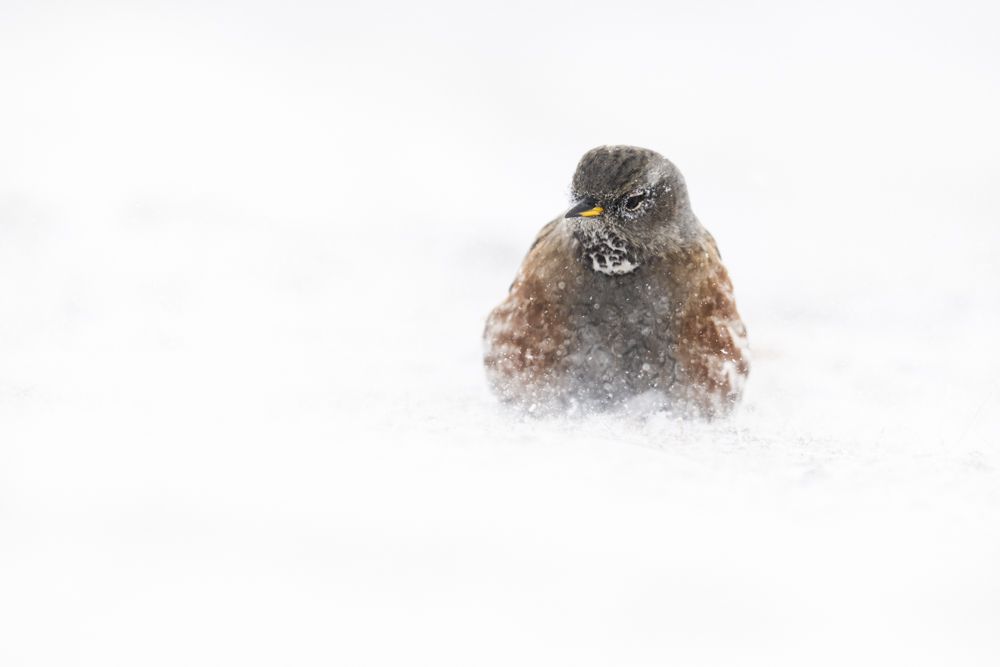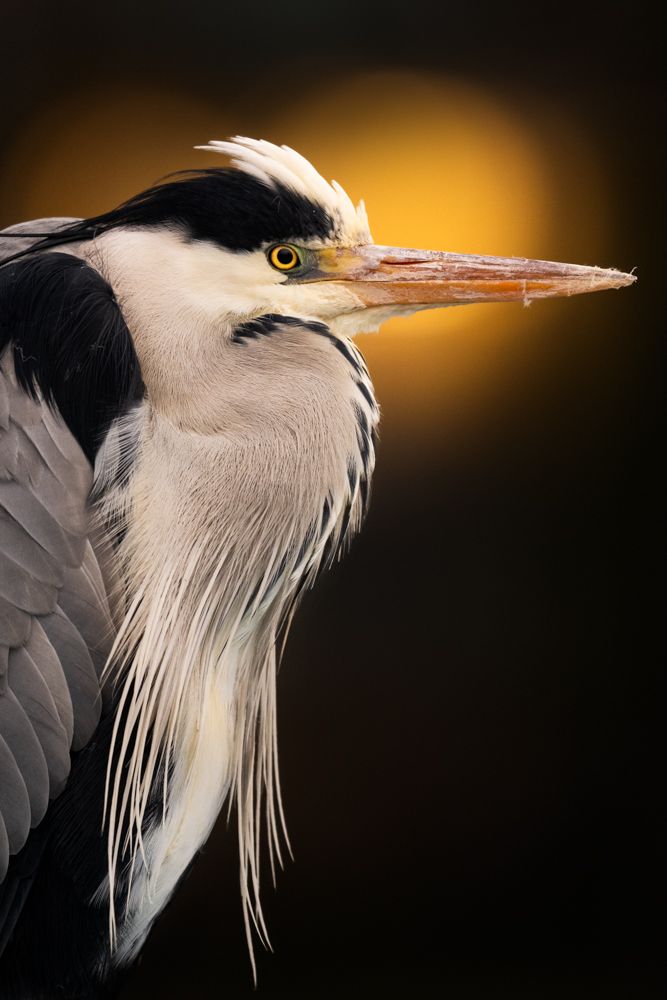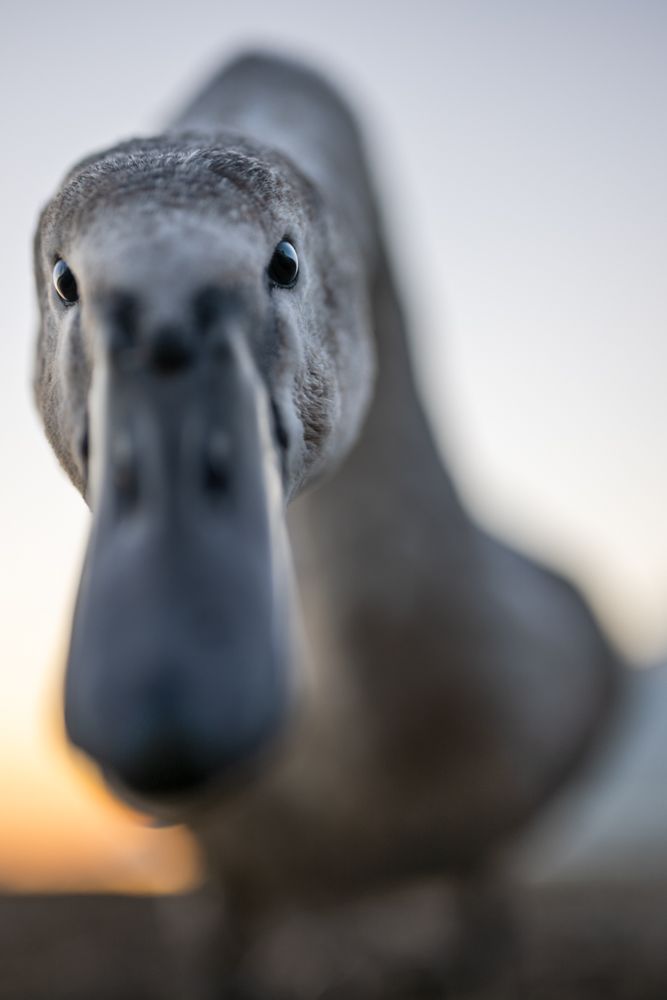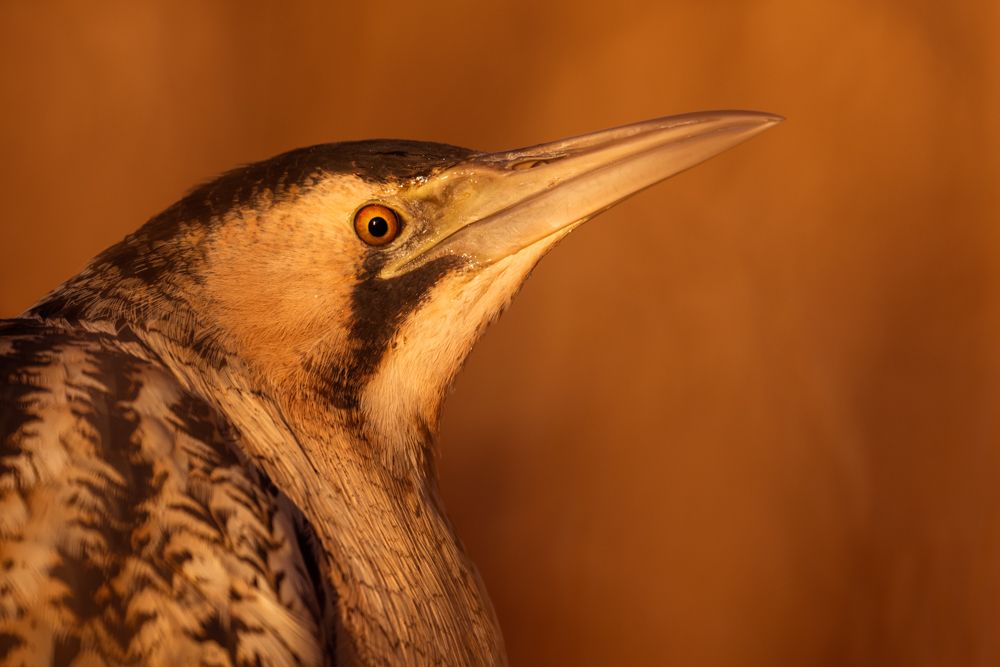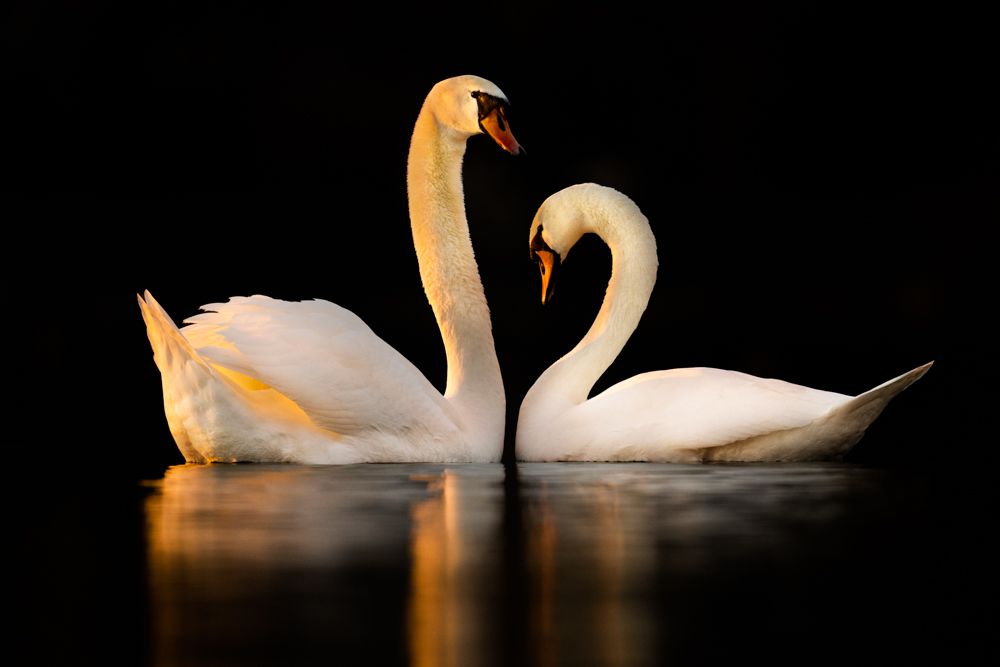Nikon Z9 - The ideal camera for wildlife photography?
The Nikon Z9 has a lot to offer in terms of specifications. With 20 frames per second, 45 megapixels, animal eye autofocus and attractive video features, Nikon's first mirrorless flagship seems to be the ideal camera for wildlife photographers. But does the camera actually deliver what it promises? I have been able to test the Nikon Z9 extensively since Christmas and have summarized my experiences so far in this review.
The specifications in the field
The Z9 has some impressive specs on paper (which is to be expected for 6800 Swiss francs!). But in the field, a good spec sheet is of little use if the camera doesn't put them on the memory card. A little spoiler at this point: The Z9 is an impressive camera in the field as well...
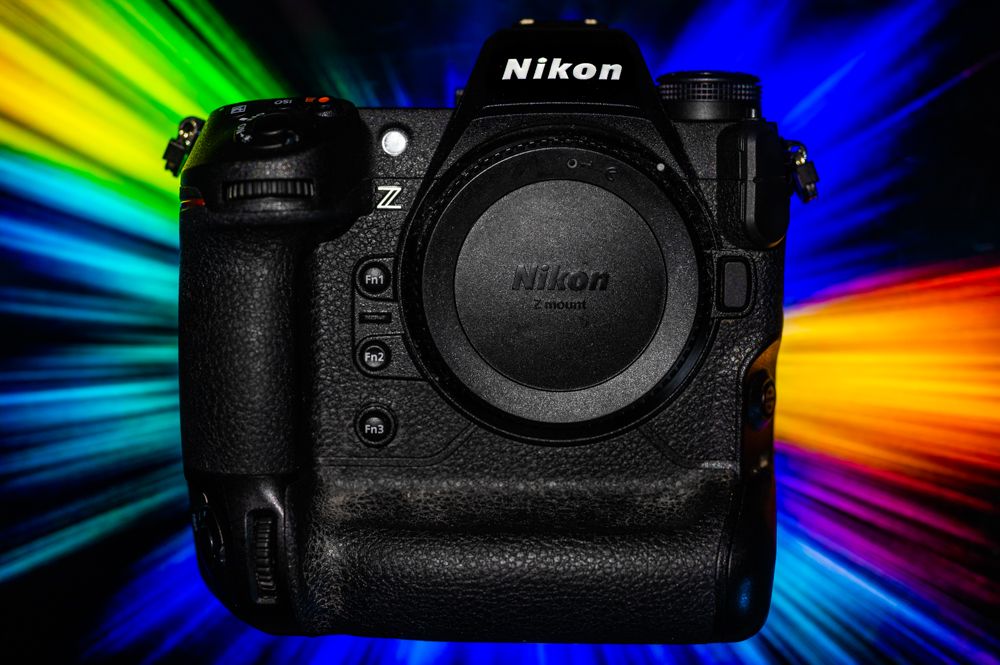
The Nikon Z9 confirms its impressive spec sheet in the endurance test out in nature
Megapixels and file sizes
Since I switched from the Nikon D7200 (24 Mpx with DX crop) to the Nikon D850 (45.7 Mpx in full frame) in 2018, I have always been a fan of the 45.7 Mpx. It may well be that I have simply got used to this resolution, but it seems to me that the 45 Mpx are just right: there are enough pixels to be able to do some cropping and yet the files are not gigantic.
So I was all the more pleased when the Z9 was announced with 45.7 megapixels. However, at 20 frames per second (which I will discuss in more detail later), 45.7 megapixels produces quite a lot of data. So at first I had some concerns about whether I would need much bigger memory cards. Fortunately, a new compression method was implemented with the Z9. In the Z9, images can now be compressed lossless, with High Efficiency* or High Efficiency. The function to save images uncompressed, on the other hand, has been dropped. I had some doubts about this at the beginning. With the D850, I was never really satisfied with the compression, which is why I switched it off.
After a few tests with the Z9, however, these concerns disappeared. The compression High Efficiency * shows no difference to the lossless compression (the best possible format) even when looking very closely. So while the image quality remains exactly the same, the files with High Efficiency * are significantly smaller again. According to Nikon, the files of the Z9 are about 2/3 smaller than those of the D850. This has proven to be the case for me as well. While my files from the D850 were about 80-90 MB, the files from the Z9 are only about 30-35 MB. That's about the same as the lossless compressed files from the Z6 (a 24 Mpx camera)!
| Nikon D850 | Nikon Z6 | Nikon Z9 | |
|---|---|---|---|
| No compression | 90 MB | 45 MB | - |
| Lossless compression | 60 MB | 25-30 MB | 60 MB |
| High Efficiency * | - | - | 30-35 MB |
| High Efficiency | - | - | 20-25 MB |
Colours and ISO behaviour
In terms of colour and ISO performance, the Z9 is roughly equivalent to the D850. Due to the lower resolution, the Z6 has much lower ISO noise than the Z9, in all ISO ranges. In general, however, the noise behaviour is very good and will probably work very well with noise reduction software. Image quality and especially colours remain very good even at high ISOs. However, the noise reduction software DxO PureRAW is currently not yet compatible with the images from the Z9, but this should change soon.
ISO 100
ISO 800
ISO 1600
ISO 4000
ISO 8000
ISO 25600
Images per second
Wildlife photography is sometimes about fractions of a second: the moment when a little grebe is about to dive or a red-crested pochard flaps its wings. The more images the camera can take at these moments, the greater the chance of getting the picture at the perfect time. The Z9 has 3 different maximum frame rates. 20 frames per second is the maximum frame rate when shooting in RAW format. For JPG images, the maximum frame rate is 30 frames per second. Furthermore, the camera can also shoot 11 MP JPG's at 120 frames per second.
Since I actually always shoot in RAW format, I am only left with the option of 20 frames per second here. But that is still a good value and is more than sufficient in the vast majority of cases. In any case, I have never had the feeling that the 20 frames per second were not enough for me.
What I would like for the 2nd generation of the Z9 or in a firmware update would be some kind of pressure-sensitive shutter release. Pressing the shutter button down halfway or with only a little pressure, I would like to shoot only at a slow frame rate (or single photo). If I then pressed the shutter button all the way down or pressed it down harder, I would then shoot at the maximum frame rate instead. Since I still shoot with back-button focus, the shutter button half-pressed has no function for me. I would therefore find it great if I could map the shooting of a single photo there, for example.
Autofocus
Now to the topic that probably interests most people the most - autofocus. The autofocus of Nikon's first and second generation mirrorless cameras (ZX and ZXII) has been criticised a lot and I didn't like the system much either. The Z6 otherwise has many strengths over the D850, but the autofocus is unusable for my area of application. Fortunately, this is no longer the case with the Z9. In general, the autofocus is very fast and very accurate. The speed of the autofocus, in particular, depends very much on the lenses. With my 500mm f/4 FL ED, I have the feeling that the Z9 uses the maximum speed of the AF motors. This was not the case with the Z6, and it was the camera which was the limiting factor. With the 400mm f/2.8 S, Nikon has now introduced a new system of AF motors that can presumably exploit the speed to a greater extent. Unfortunately, I have not yet been able to test the lens.
One of the great advantages of mirrorless cameras is the ability to automatically track subjects. With the previous Z cameras, this already worked reasonably well with people. Now birds and a large part of the craniota (skull animals) can also be tracked. For wildlife photography, this feature is very welcome and has worked very well for me so far. With the D850 I always had the problem that I was very limited by the focus points in the middle of the frame when an animal came very close. So I often had to neglect the composition so that I could at least focus on the animal's eye. With the Z9, however, this is no longer a problem. As long as the eye is somewhere in frame, the camera finds it without any problems in most cases. This in turn allows me to concentrate fully on the composition and I no longer have to position the bird in the centre of the frame.
In general, the tracking works very well, but it is far from perfect. In front of very distracting backgrounds, the tracking sometimes has quite a lot of trouble and not all types of birds work equally well. If the bird looks at the camera at an angle, the AF sometimes has the problem that the focus point is selected in such a way that the focus is then more on the beak than on the eye. Tracking is also very dependent on how steady you hold the camera. This is also crucial for birds in flight. If you track the camera very smoothly, the autofocus will follow much better than if you track the image jerkily.
Compared to previous AF systems on DSLR cameras, however, the Z9 is at least equal if not better in all aspects. With very static or slow moving animals, the tracking is a fantastic improvement in the vast majority of cases. With birds in flight I still have mixed feelings. Sometimes I have series where the camera detects and tracks the eye fantastically, but sometimes the tracking doesn't work at all. Over time, however, you realise where the limitations of the tracking are and then you adapt to them.
If the bird is not too far away and also travelling rather slowly, tracking works excellently. This helps enormously because you can concentrate much more on the composition.
Electronic viewfinder and screen
Another thing that never convinced me about the Z6 was the electronic viewfinder. The viewfinder lag was quite small, but still noticeable and I preferred the optical viewfinder of the D850. The Z9's electronic viewfinder is far from impressive on paper, but in practice it works great and I now like it even better than the D850's optical viewfinder. Viewfinder lag is not noticeable to my eyes and despite the relatively low resolution of 3.69 million pixels with an equally low refresh rate of 60 Hz, it does its job exceptionally well. This is because while the viewfinder may not be that high-resolution on paper, the resolution is never downgraded and is also very bright. Compared to competing electronic viewfinders, I would rate the Z9's as at least equal, if not better.
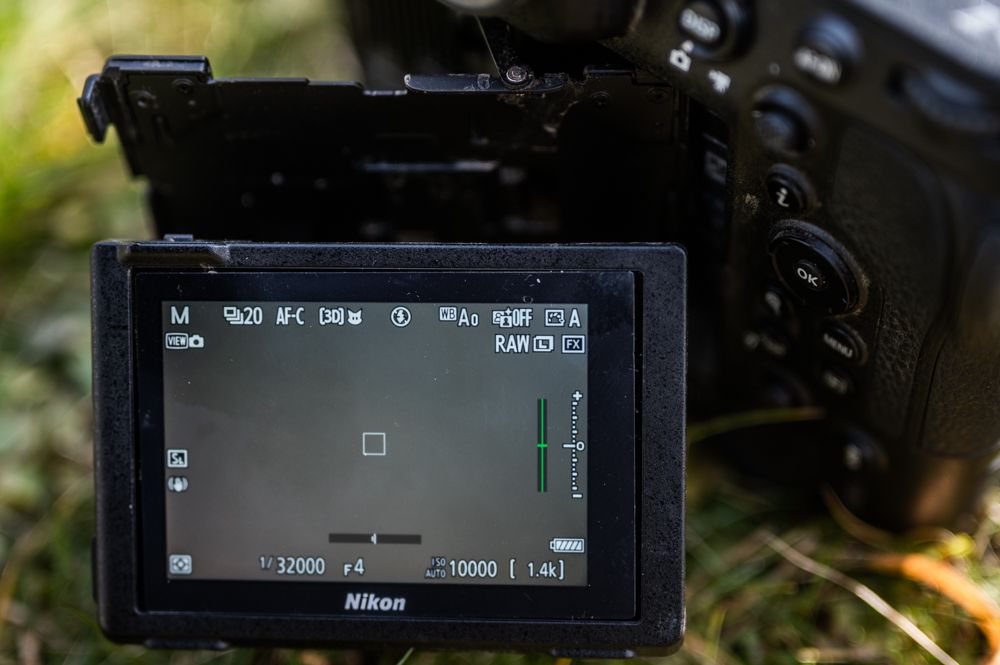
With mirrorless cameras, the viewfinder and the screen show the same image. This makes the camera even more flexible to use.
The fact that the viewfinder's refresh rate is limited to 60 Hz is, however, due to one of the camera's great strengths. The viewfinder shows an image continuously, even when the camera is taking a photo. As I understand it, the images displayed in the viewfinder are always read out when the camera is not taking any photos. So 60 pictures per second are read out for the viewfinder and between these pictures the camera takes the "real" photos. Of course, this only works with photos that have a fast enough shutter speed to fit between the viewfinder images. With slower shutter speeds, the viewfinder accordingly starts to stutter again before blacking out again. For wildlife photographers, however, this is probably rarely an issue.
Unlike DSLR's, the screen of mirrorless cameras shows the same as in the viewfinder. And while AF with Live View was less "hit" and more "miss" from the D850, for example, this works worlds better with the Z9. Especially for waterfowl, when I can't look through the viewfinder to get to water level, the screen on the back is brilliant. The fact that it can be flipped up, as on the D850 and Z6, helps even more. With the Z9, the screen can also be flipped up in portrait mode. So far I've hardly ever used it, but I'm sure it will come in handy at some point.
Electronic shutter
The high frame rates of the Z9 are basically possible thanks to the new sensor. Although the sensor is identical to the D850, Z7 and Z7II in terms of megapixels, the technology behind it is different. This means that the photos can be read off the sensor much faster. This is not only in terms of the number of images per second, but also in terms of the number of pixels.
Common image sensors can shoot images with two types of shutter: the mechanical and the electronic shutter. With the mechanical shutter, a mechanism in front of the sensor determines how much light falls on the sensor. With the electronic shutter, on the other hand, this is all done digitally, as the name suggests. So far, however, the vast majority of cameras cannot read out all the pixels at the same time as the electronic shutter. Instead, the pixels are read line by line, starting at the top. So it takes a certain amount of time before all the pixels are read. With conventional sensors, this has led to an effect called rolling shutter. Thanks to the mechanical shutter, however, this effect remained hidden most of the time and was only visible with the electronic shutter. The Z9 has such a fast new sensor that this effect no longer occurs with the electronic shutter. The mechanical shutter has thus become obsolete, which is why it is no longer present in the camera.
This in turn has two important consequences. First, it eliminates the noise of the camera. In very quiet environments, you can still hear very finely that something is happening, but otherwise the camera is dead silent. If you don't want this, you can let out a shutter sound via the loudspeaker. For animal photographers, this is rather uninteresting and at best funny to show off. Even though I think the chances of this are very slim, I would also find it quite funny if you could load your own sounds onto the camera.
The second advantage of the exclusively electronic shutter is that even less can break on the camera. Until now, the shutter was the mechanical part of the camera that tended to break the most, regardless of how the owner handled it. This was also one of the main reasons why I wanted to switch to the Z9 as soon as possible. My D850 was already well beyond its stated shutter life expectancy and was already showing small signs that it wasn't going to last forever.
Weight and handling
At 1.3 kg (with battery and memory cards), the camera is rather on the heavy side. In addition, due to its rather compact size (the Z9 is smaller than the D850 with Grip), it seems very dense. Is this now an argument against the camera? For some it probably is. To be honest, it doesn't bother me at all. The camera seems (and probably is) solidly built and that is worlds more important to me personally than the weight. And since as a wildlife photographer you always carry a heavy and large backpack around with you anyway, the weight and size don't play such a decisive role.
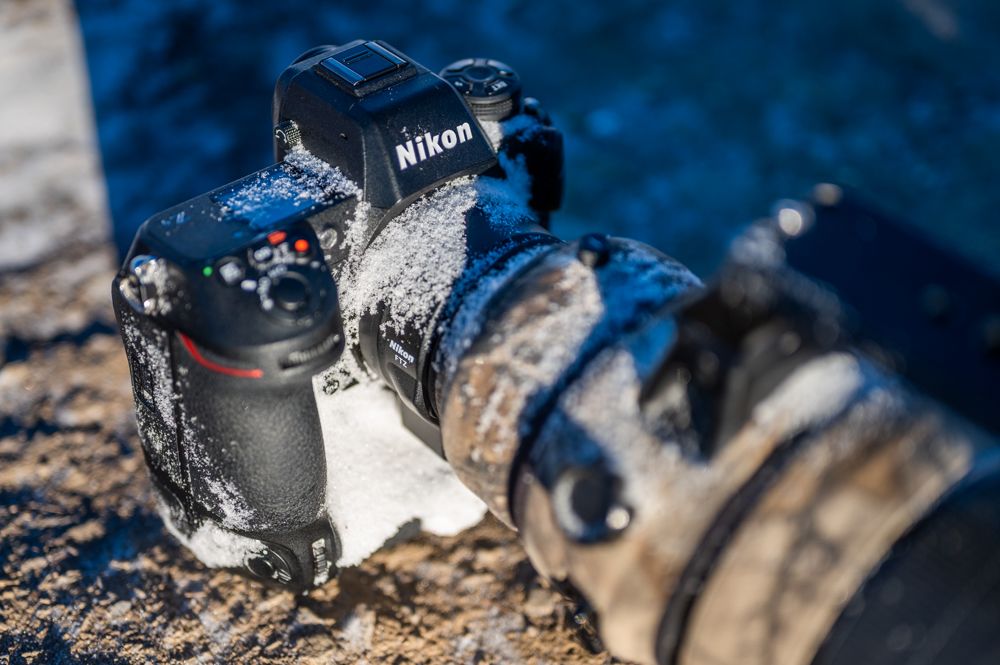
At 1.3 kg, the Z9 is relatively heavy, but the camera feels very good in the hand. In terms of weather, the camera should be able to withstand quite a bit.
Those who have photographed with Nikon before will feel very familiar with the layout of the Z9 right from the start. Compared to a DSLR, some buttons have moved, but the important buttons are in the usual places. However, the basic concept of operation has changed compared to DSLRs: the camera can now be operated through the viewfinder without any problems. Many of the buttons that were previously on the left of the LCD panel have been moved to the right. This takes a little getting used to, but in the long run it makes sense.
What I was never completely satisfied with on the D850 was the joystick. That's what it's officially called, but it's actually just another D-pad with a total of 9 directions and an integrated button. I find it rather awkward to move the focus point with the joystick and when I want to press the joystick button to activate my alternative focus method, I like to move the focus point instead of switching the method. I would almost prefer a kind of smart controller like Canon's on the AF-On button plus a separate button for a second focus method.
I'm also not so happy with the normal D-pad. Firstly, it doesn't feel that good to me. Because even compared to the worn-out D-pad of the D850, the pad of the Z9 is inferior to that of the D850 in terms of feel. Indeed, there is hardly any feedback when you press a button and I had an extraordinary amount of trouble operating the pad with gloves on. I could well imagine that this could be due to a better seal, but I still find it a bit of a shame that the haptics have deteriorated so much. In general, I would find an additional dial instead of the D-pad quite useful, e.g. to be able to set the ISO value simply by turning the dial.
Video
Even though I mainly take pictures myself, I have recorded video more and more often in the last few years. While both the D850 and the Z6 could shoot quite good videos, the Z9 beats them in all aspects in this category as well. The fact that the camera can shoot 8k 30p for over 2 hours is pretty irrelevant to me personally, but it does show that the camera is capable of something. I find internal 10-bit N-Log, 4k 120p and a reliable autofocus in video mode much more exciting. Furthermore, 8k 60p in a new Nikon RAW format and ProRes RAW for certain 4k modes are to be added via a firmware update in the future. Both things I probably won't need, but you never know.
Other features
The Z9 also brings a few other new features. Some features were particularly welcome to me:
Video AF
Not only can the speed of the video AF be adjusted, but you can deactivate the speed reduction for the time when you are not recording a video. If I now want to focus on a bird, it is much faster and the more precise and the slower AF only takes effect during the actual filming.
Photo configuration on Fn button
This feature was first introduced in the D6 and is fortunately also found in the Z9. It allows me to save specific camera settings to a button (on the front, for example). Unlike previous cameras, I only have to hold the button down for the settings to be activated. With my D850, I still had to press a button and turn a dial to change settings. The new method is much faster and more intuitive and I use it a lot. For waterfowl at sunset, for example, I set 1/32000, ISO 64 and f/ 4 or smaller. This way, when the birds swim directly in front of the sun, I can photograph them with the darkest settings possible. For songbirds, on the other hand, I put a very slow time and 10 frames per second on the button. If the bird is now sitting very still on a branch, I can try to reduce the ISO this way and I also shoot a little less photos.
Starlight mode
The starlight mode brightens up the viewfinder and thus decouples the displayed image from the camera settings. For example, if I shoot into the backlight and underexpose a lot, I would otherwise see almost nothing in the viewfinder. With the starlight mode, on the other hand, I can see the image perfectly brightened and the autofocus also seems to benefit somewhat.
Shorter exposure times
The Z9 can not only expose up to 1/8000 of a second, as is usually the case, but now also up to 1/32000. Especially for birds in backlight and as silhouettes in front of the sun, this is enormously helpful to get as much detail as possible in the picture. In combination with the starlight mode and the shoot configurations, it has never been so easy to photograph birds in backlight.
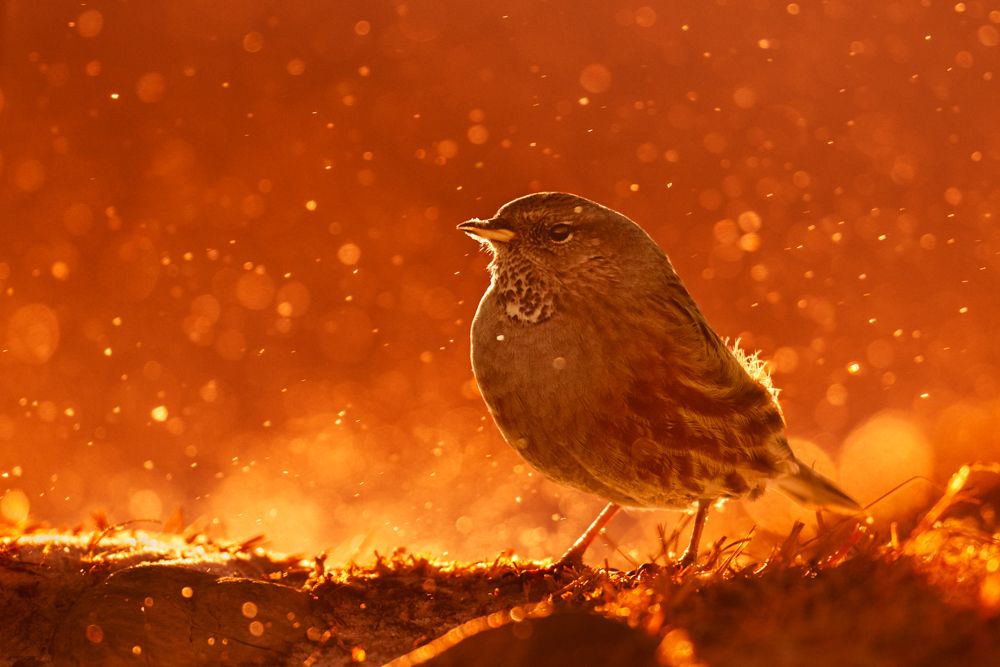
Shooting backlit has never been easier than with the Z9, especially as you no longer have to worry about accidentally looking directly into the sun with the telephoto lens.
Firmware Update Wish List
Speaking of firmware updates, it has already been officially announced that some features will be added in the future via a firmware update. In addition to the already announced features, I would be happy about the following:
As already mentioned above, 20 frames per second is more than enough in most cases. But as is almost always the case, it could of course be a little better;-) I don't know if higher frame rates would be possible, but I think especially with the High Efficiency Format even higher frame rates could be achieved. Be it 25 or 30 frames per second, in any case it would be a great and welcome improvement.
As mentioned above, I would love to see more functionality of the half-press shutter button. If the subject is not moving at the moment, this would be a quick and intuitive way to lower the frame rate.
The tracking of the birds already works relatively well. Nevertheless, there is certainly still room for improvement. A tracking update would therefore definitely be welcome, but I think something like this could already be in the works.
Z90 - Is the baby Z9 coming?
Those who are interested in switching to a mirrorless camera, but find the Z9 a bit too expensive, probably won't have to wait much longer. Sooner or later, the technology will also be available in the other cameras. While nothing is known yet and the rumour mill is still cold, it wouldn't surprise me if Nikon launched a baby Z9 this year. The Z90 would be what the D300 to the D3, the D300s to the D3s and the D500 to the D5 was. In any case, according to my ideas, the Z90 would be a Z9 with the size of the Z6/Z7, would have around 20 Mpx in DX format and the same processor as the Z9. Furthermore, it would also make sense to announce the camera together with the 200-600mm. This lens has been on the roadmap for a long time and together with the Z90 it would be the ideal camera for birder and wildlife photographers. So the mirrorless equivalent of the D500 with the 200-500mm. Why the assumption? Canon has been the subject of frequent rumours lately that a mirrorless R camera might appear in crop format. It would therefore not surprise me if Nikon and Sony were to follow suit or even launch a similar camera relatively soon.
Conclusion
The Nikon Z9 makes some big and bold promises on the spec sheet. However, these hold up bravely in the field and the camera leaves few wishes unfulfilled. For photographers with Nikon DSLR cameras or mirrorless cameras of the first two generations, the Z9 is definitely worthwhile, as long as you really need the features. The Z9 is on the expensive side in absolute terms, but relative to the competing models, it is rather on the cheap side. In this price range, however, the competing models only play a minor role in my view. Anyone who buys a Nikon Z9, a Sony A1 or a Canon R3 has probably already photographed with the corresponding brand before and it is hardly worth switching from one brand to another in the current state of affairs. So if you shoot today with, say, a Sony A7RIV and a 600mm f4 or a Canon R5 and a 400mm 2.8, you gain relatively little and are better off investing the money in a photo trip. However, anyone who still shoots with a Nikon D5, D6, D850 or even a D500 and who may have already flirted with other systems now finally has an extremely interesting option from Nikon. Thanks to the Z9, Nikon now also has a mirrorless camera that outshines the DSLR in all categories imaginable. And if you can't buy the Z9 because it's a bit too expensive, the technology will soon be found in cheaper cameras like a possible Z90 but also the Z6III, Z7III or possibly the Z8.
